2023 GMC Canyon Up Close: Abandoning the Streets for the Hills

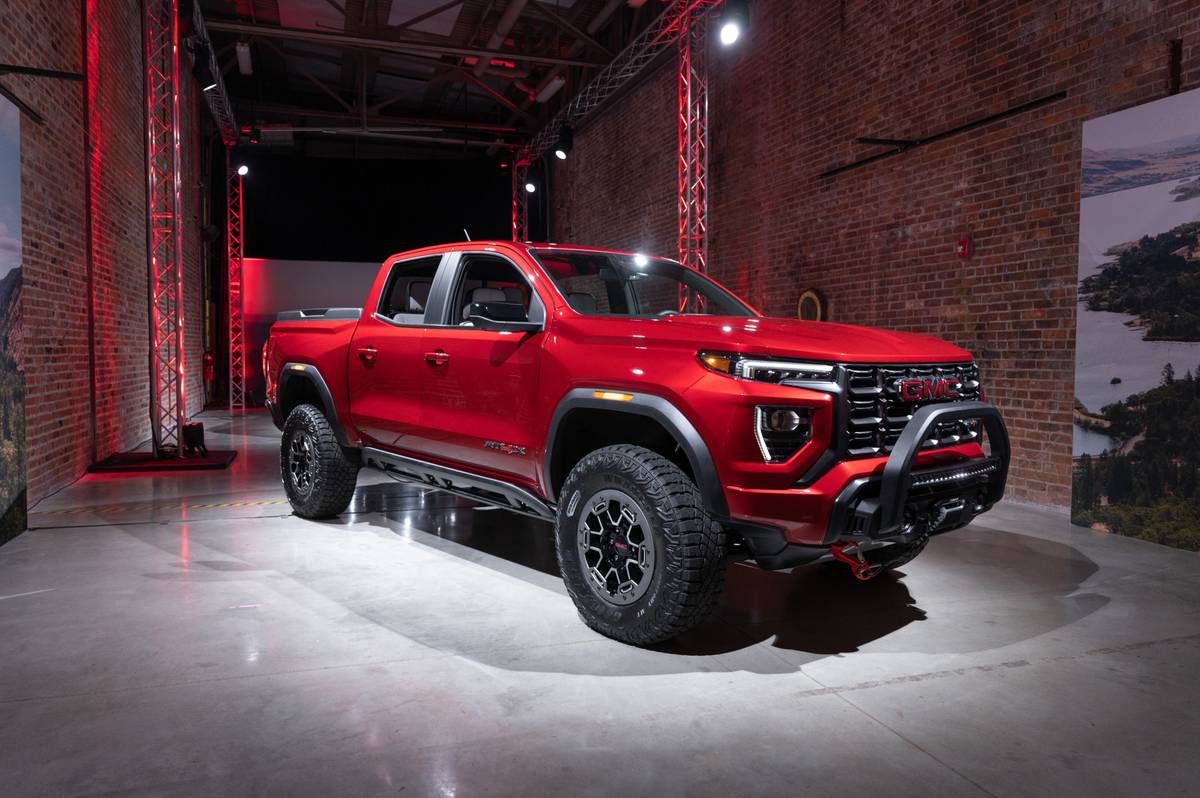
For many years, the GMC Canyon and Chevrolet Colorado were basically two minor variations on the same theme. Same platform, same looks, same engines and same interiors, the biggest difference between them seemed to be marketing-based. But now, there’s an all-new Canyon for the 2023 model year, and while it’s still based on the same gear and bits as the Colorado, this might be the most distinctly different it’s ever been from its Chevy brother. Off-road pickups seem to be all the rage right now: Chevy is introducing no fewer than three off-road variants of the new Colorado, and GMC is going a step further with the Canyon now only being offered with off-road equipment. While the Colorado is going to be offered in less expensive on-road variants, the Canyon is going to be a pricier, better-equipped model with a simplified powertrain lineup and more standard off-road equipment. Looks like GMC is going to make it a little easier for you to take your Canyon … to the canyons.
Related: 2023 GMC Canyon: Who Needs Roads?
A Visual Knockout

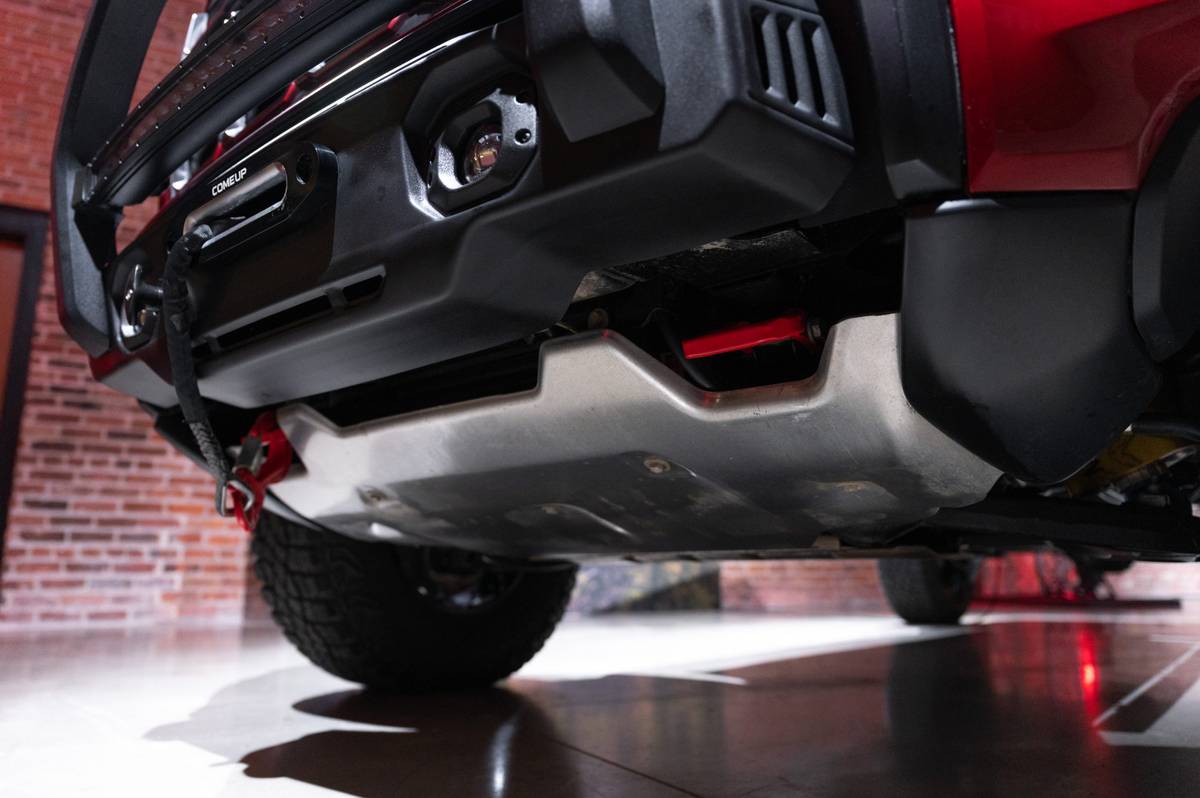
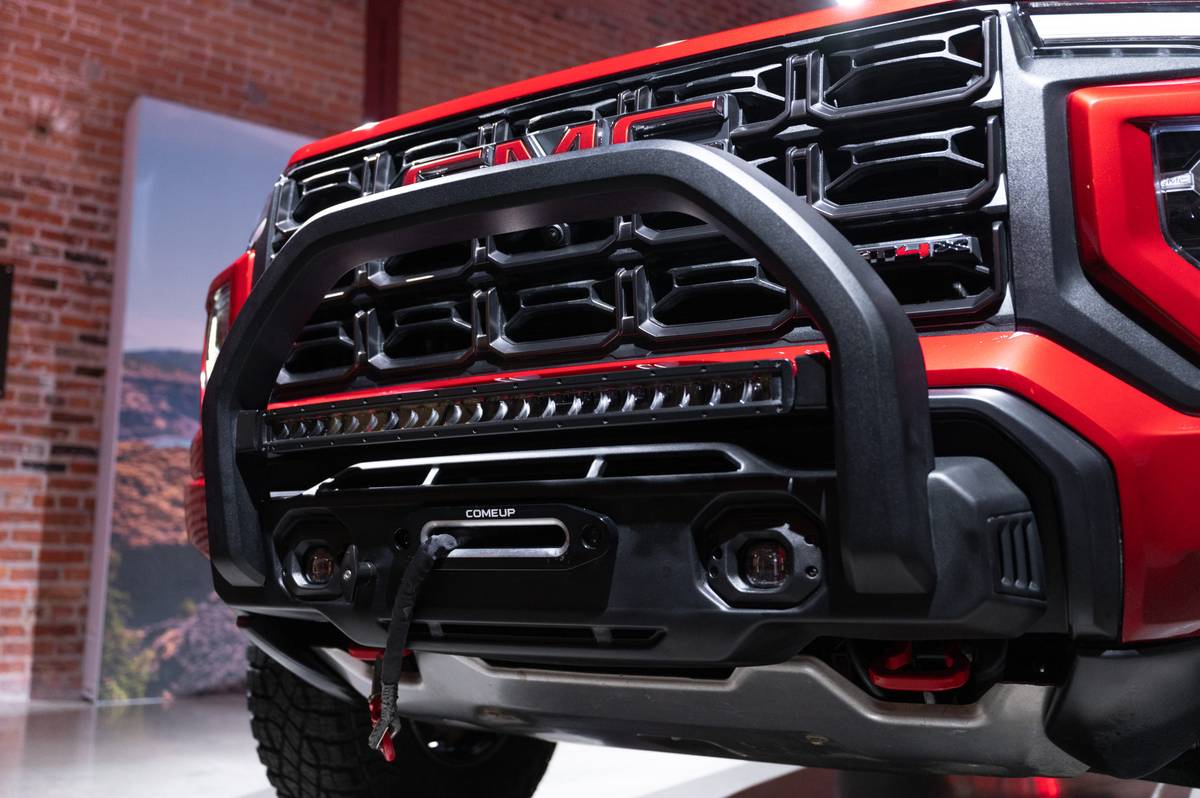
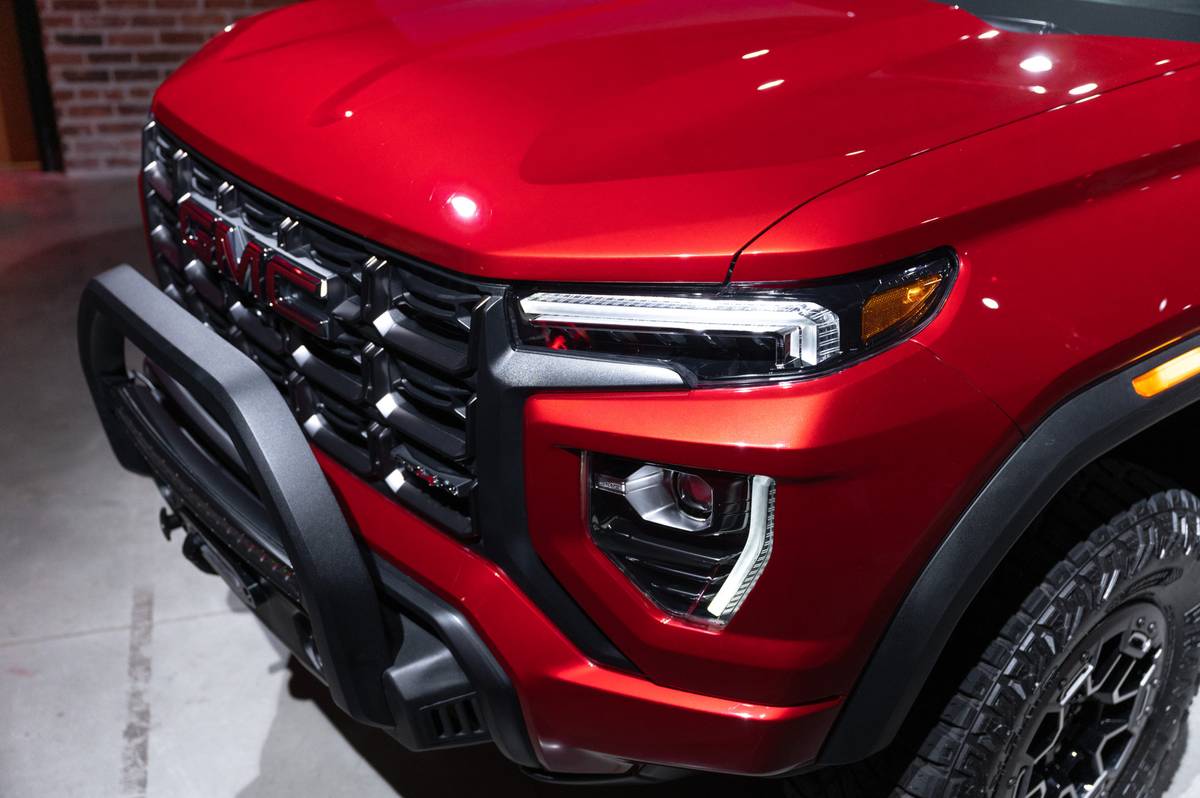
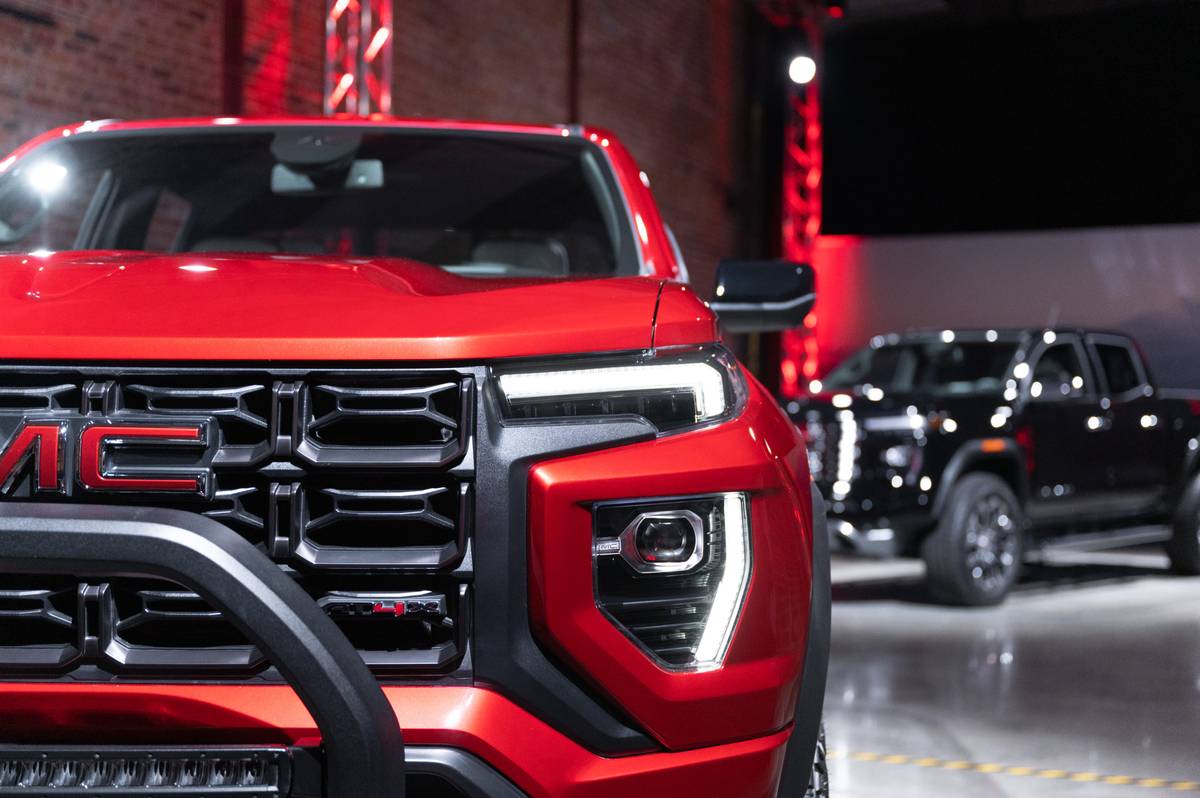
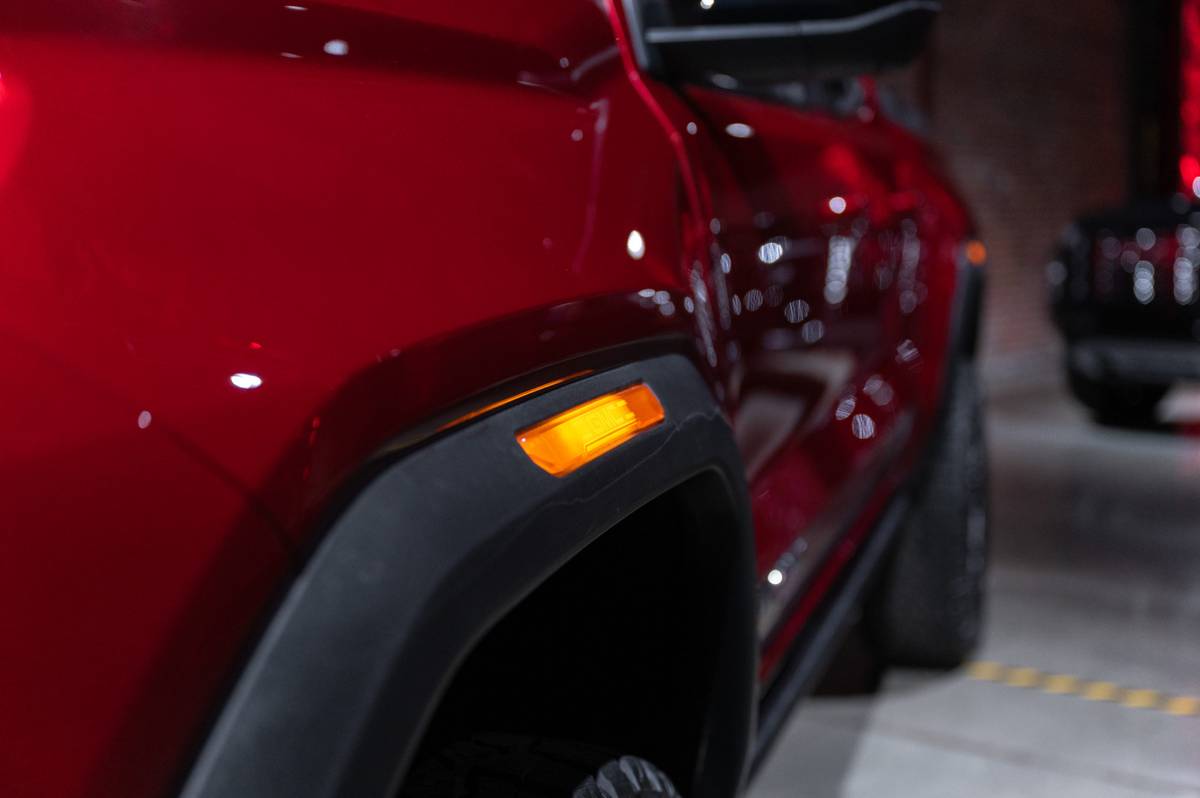
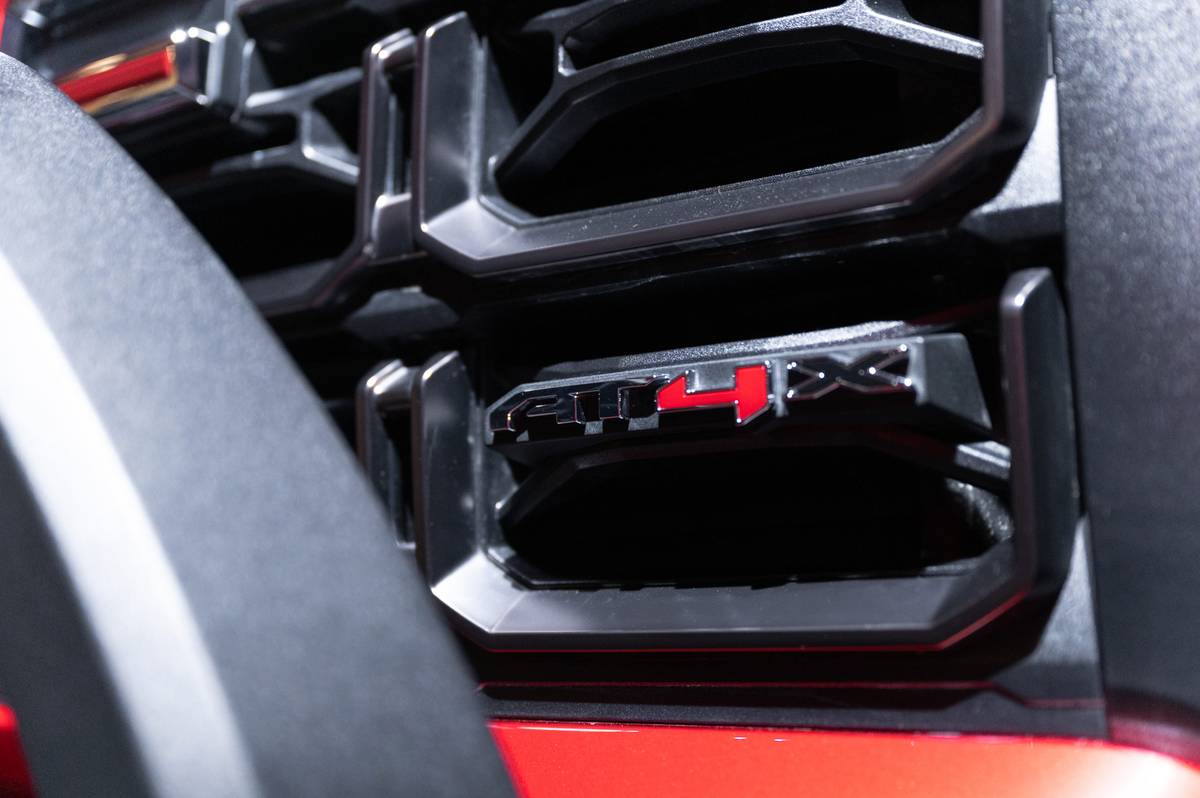
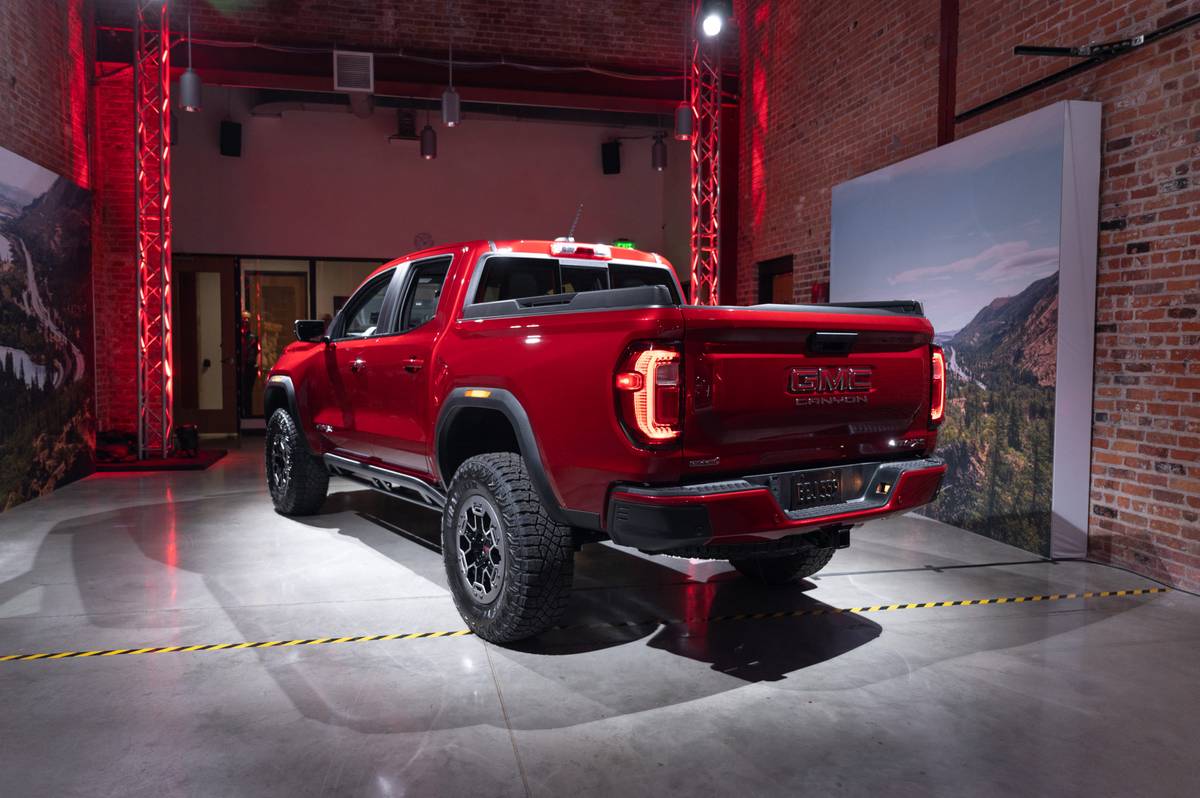
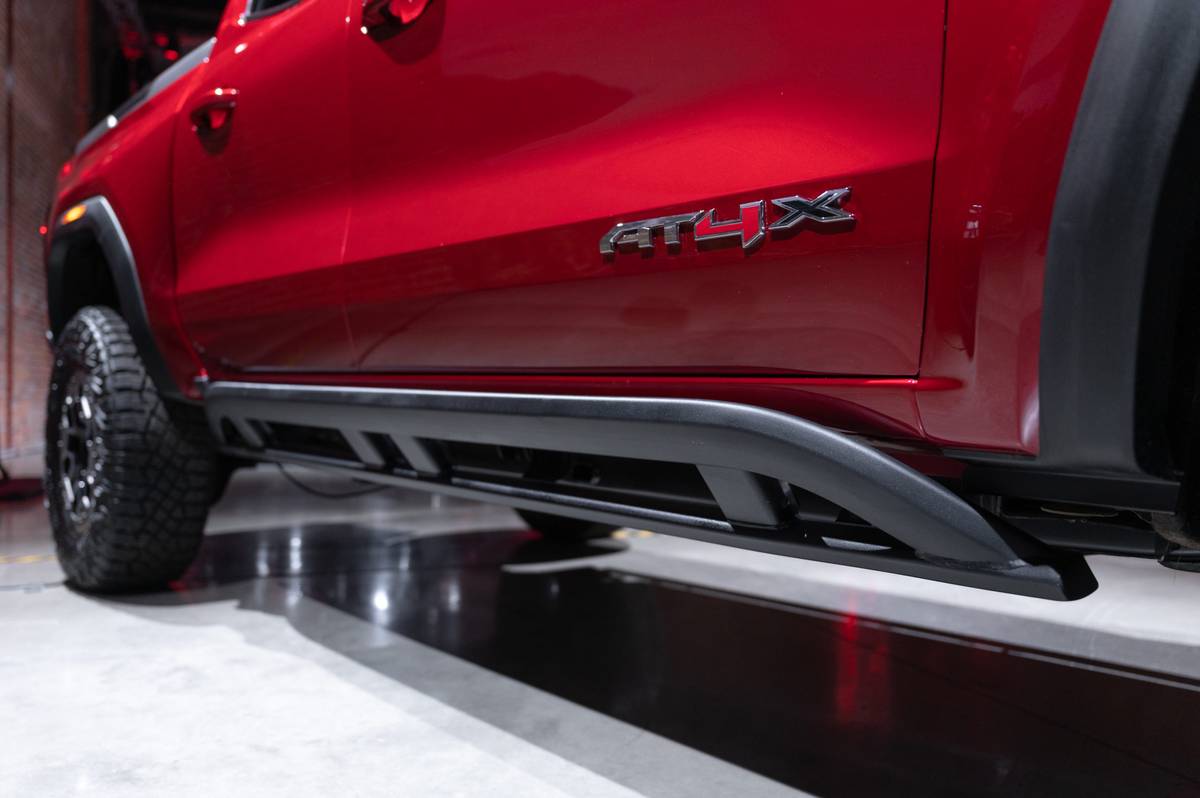
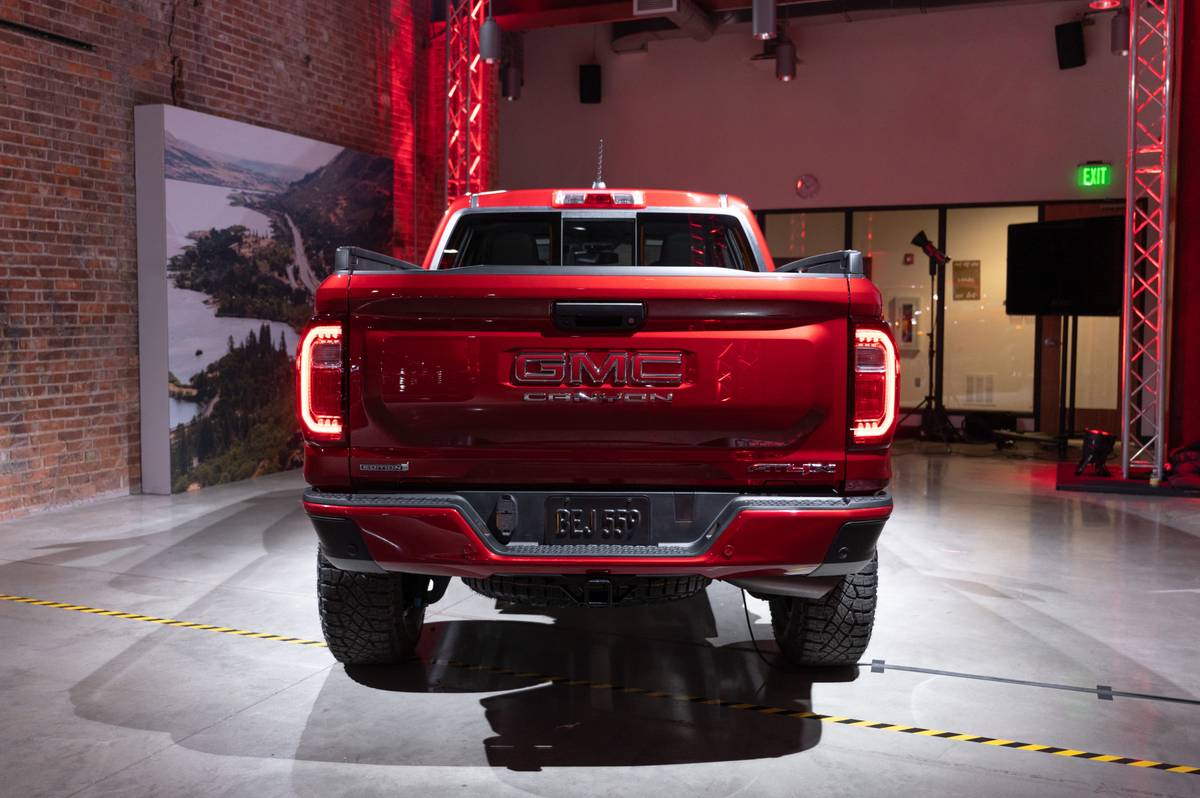
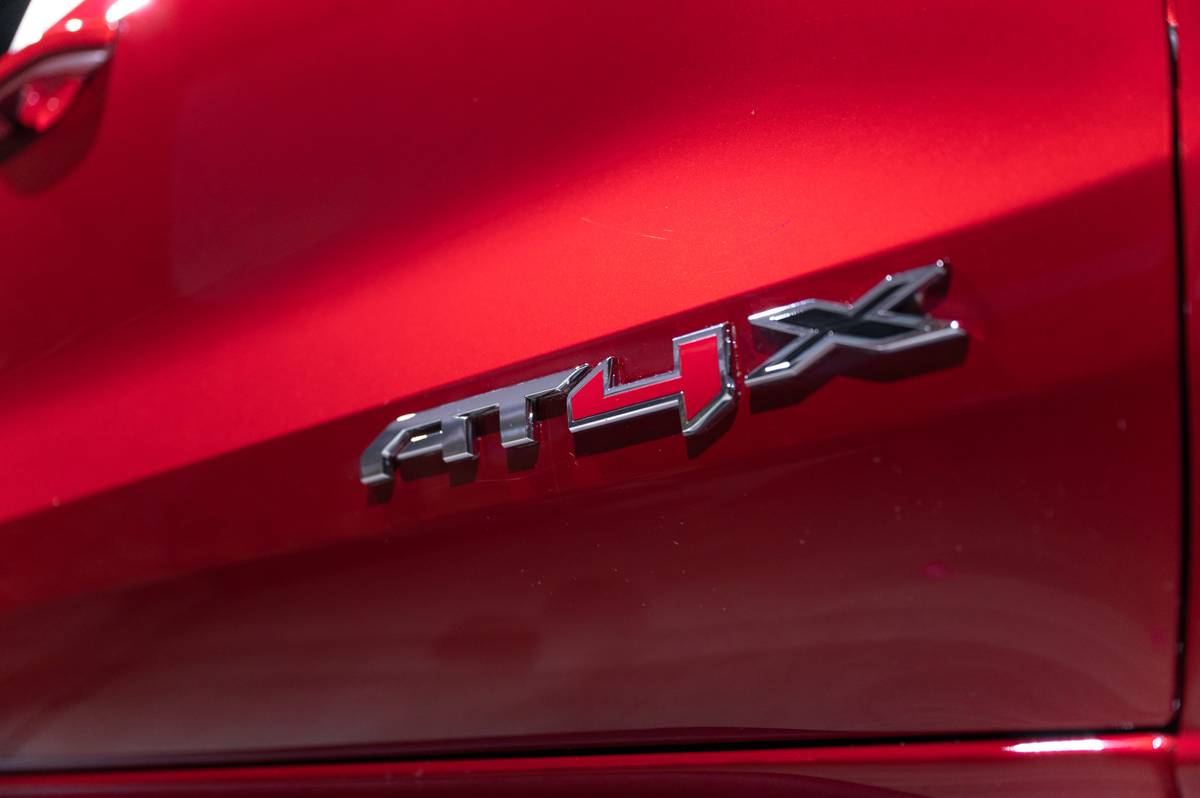
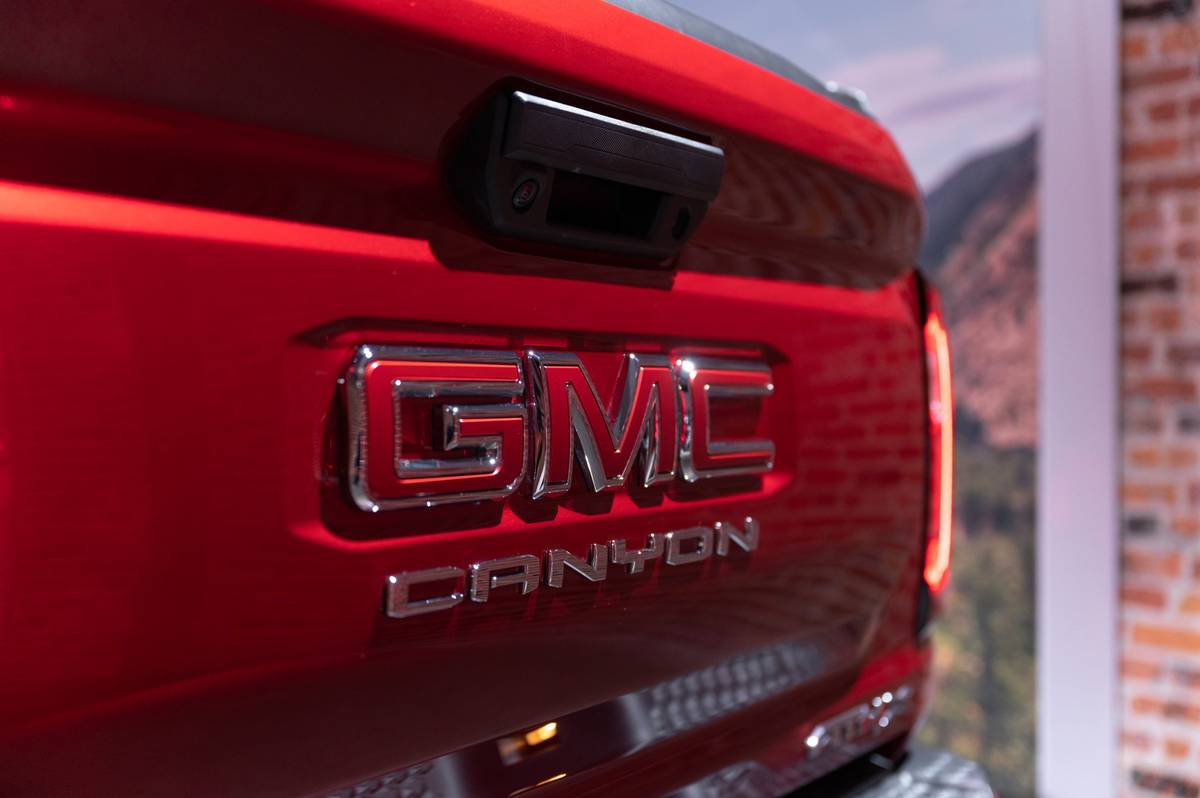
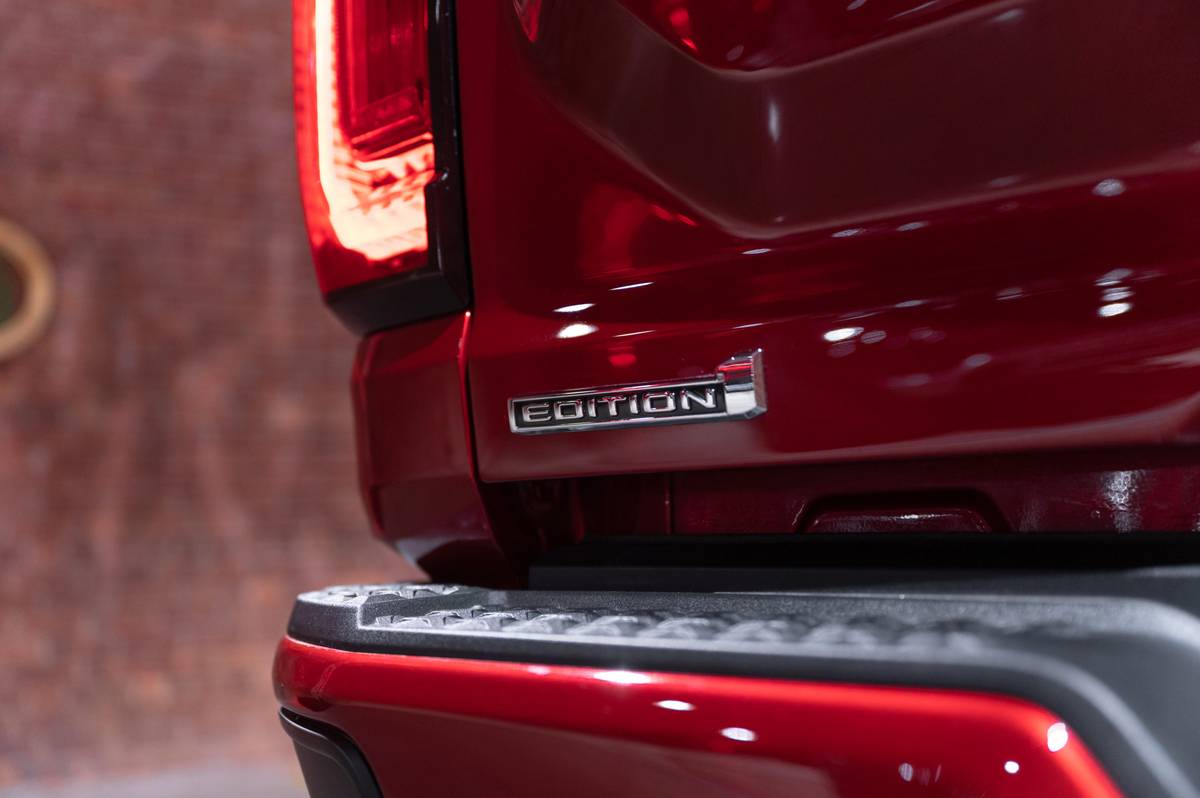
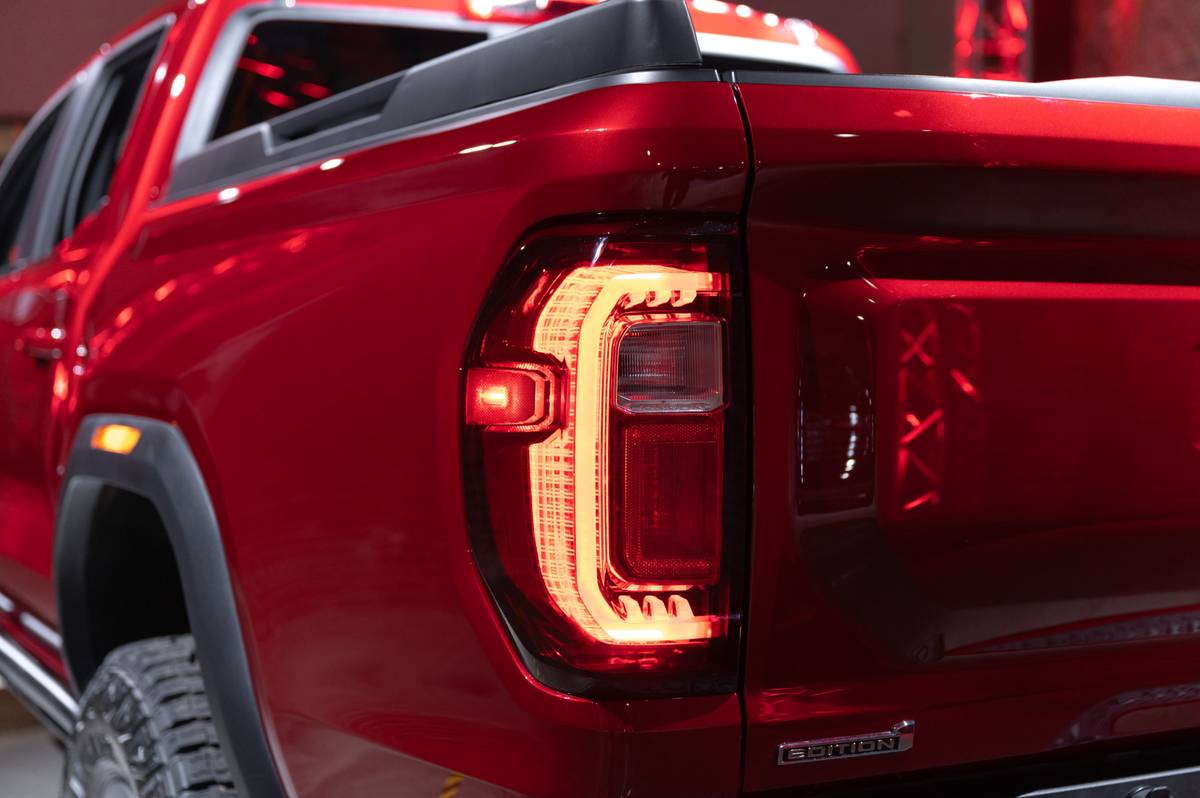
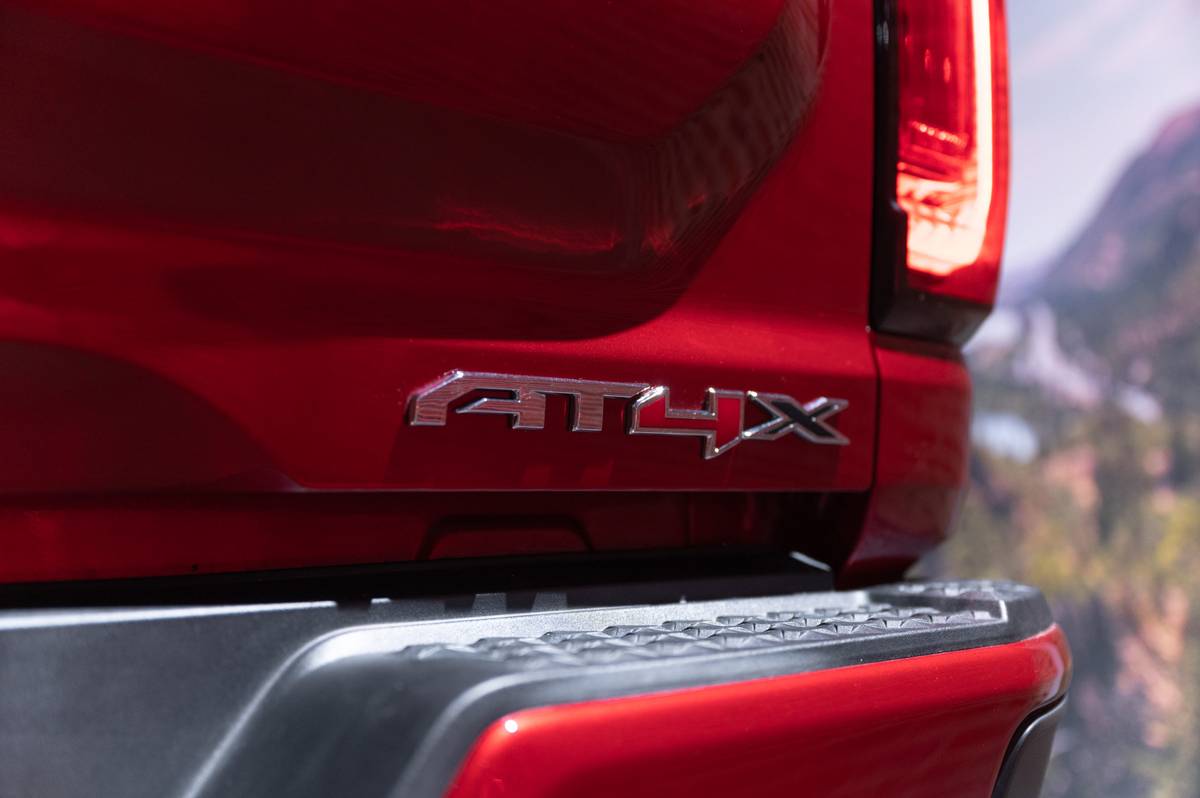
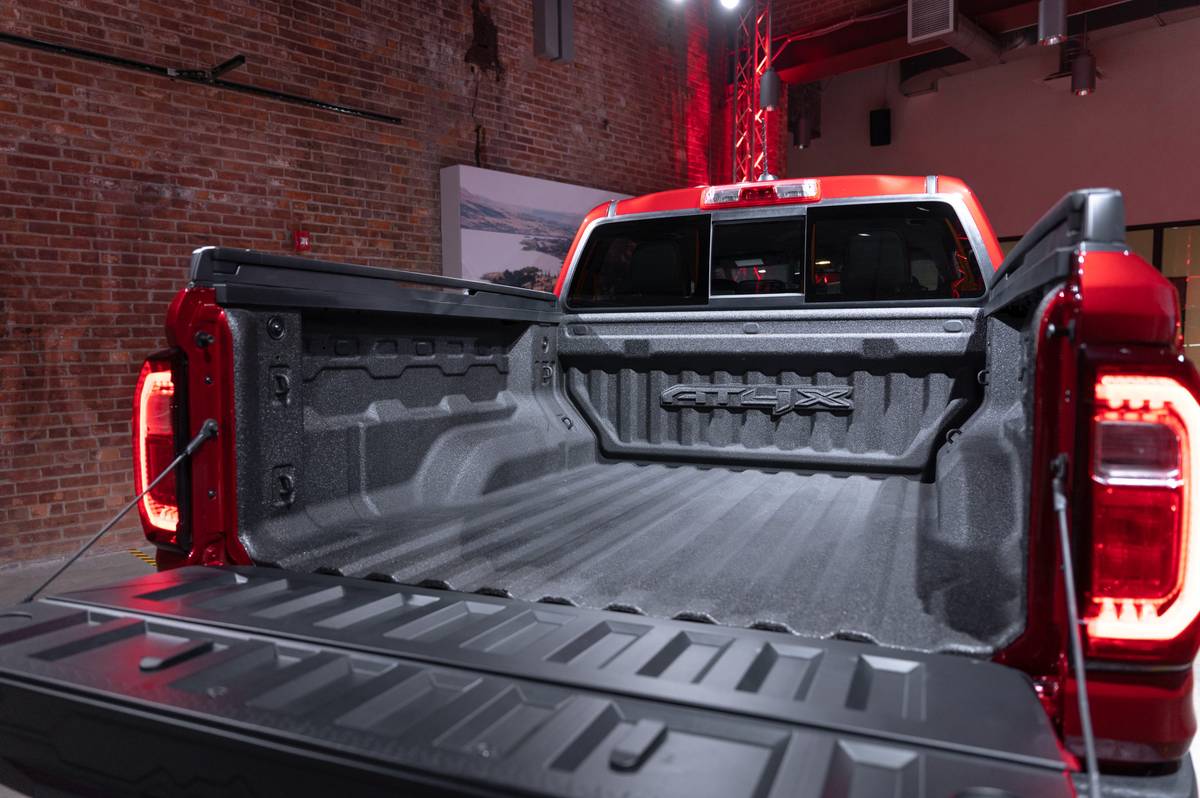
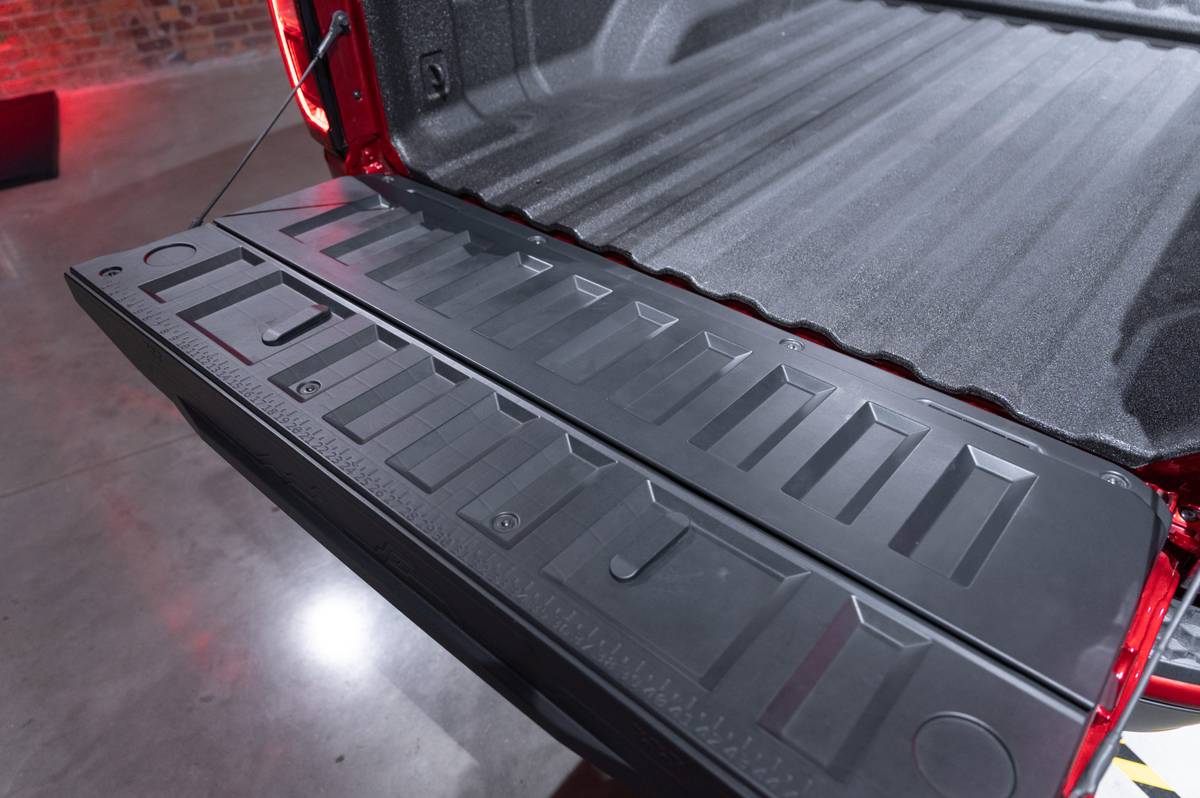
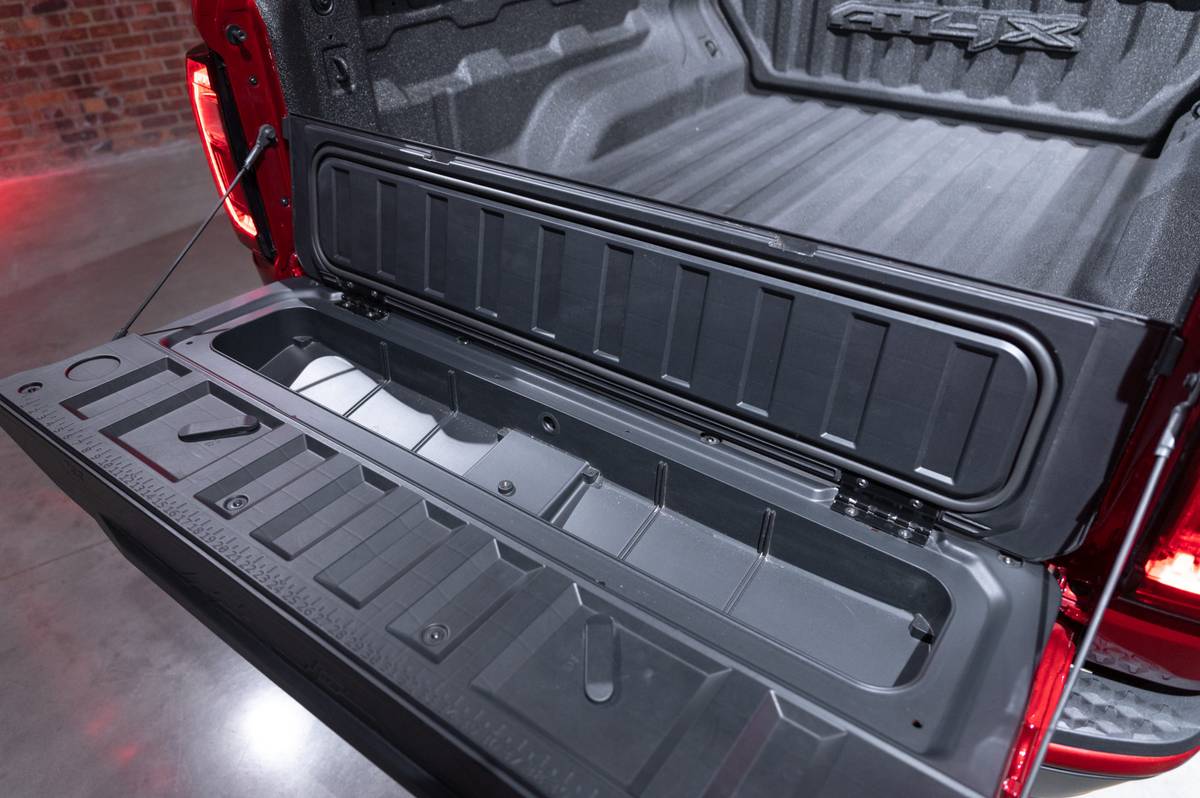
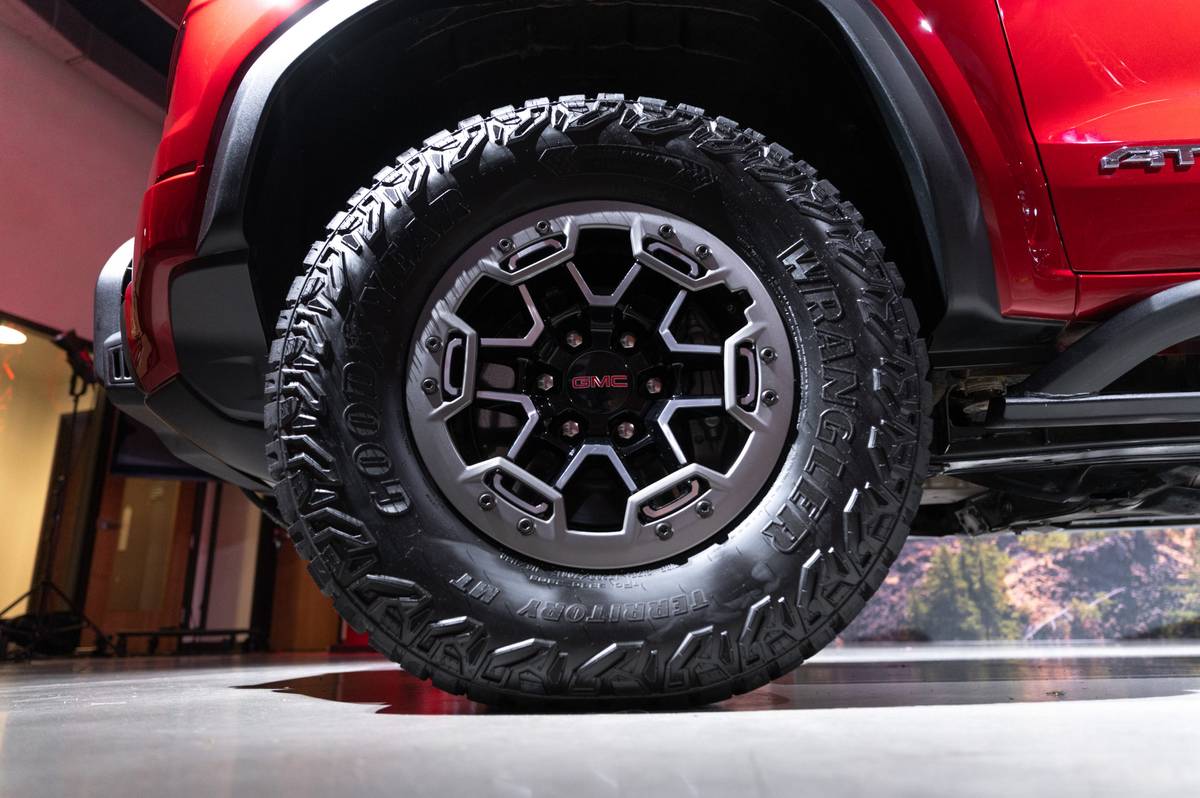

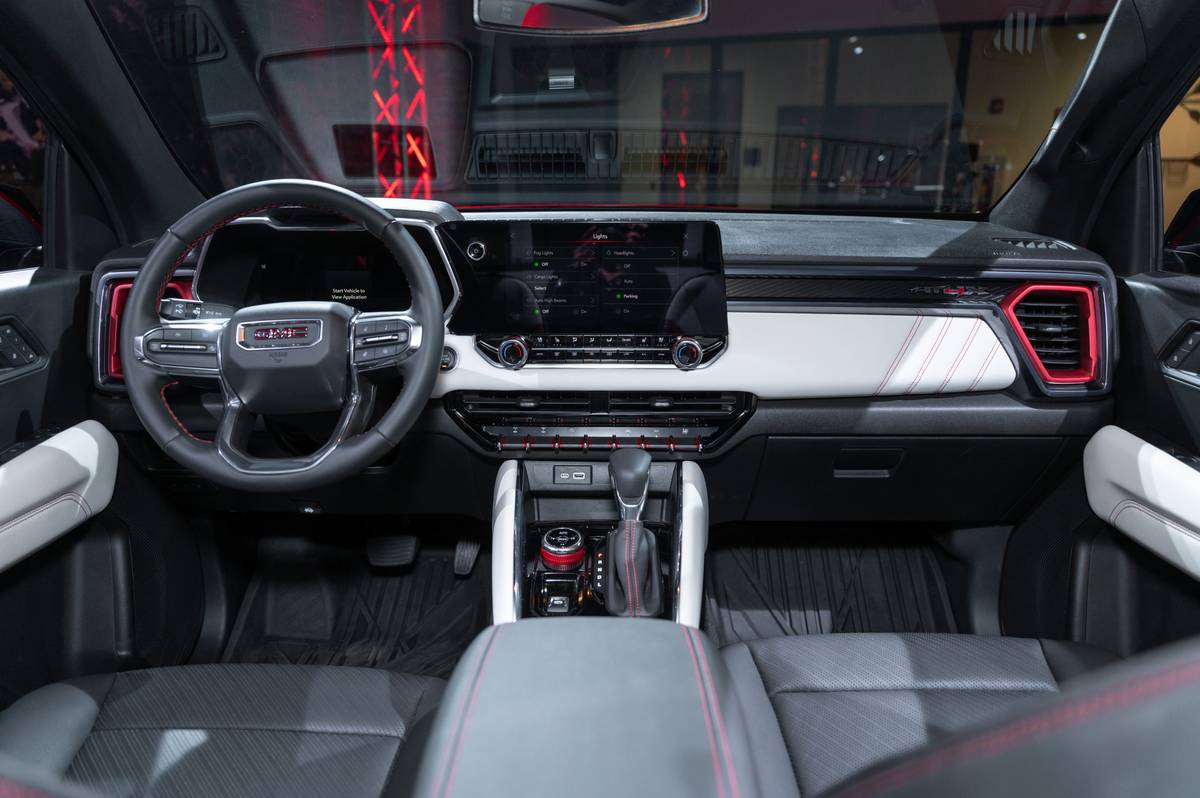
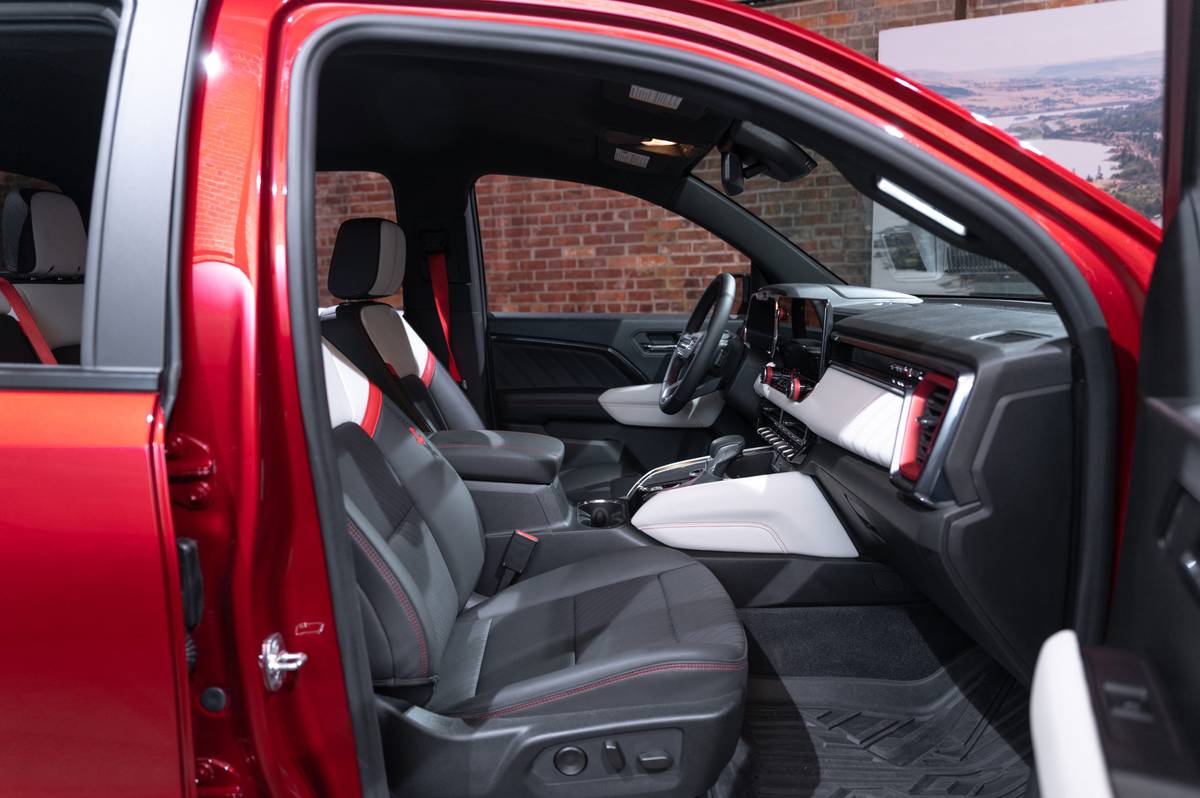
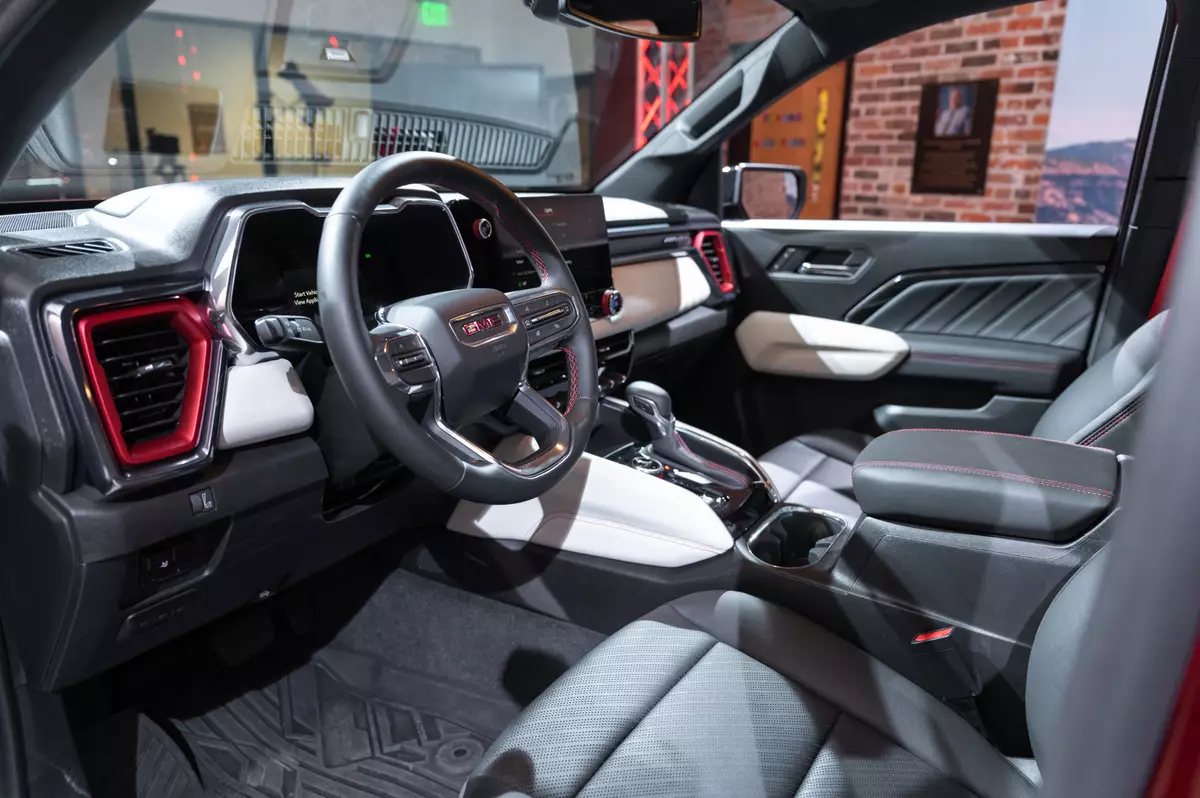
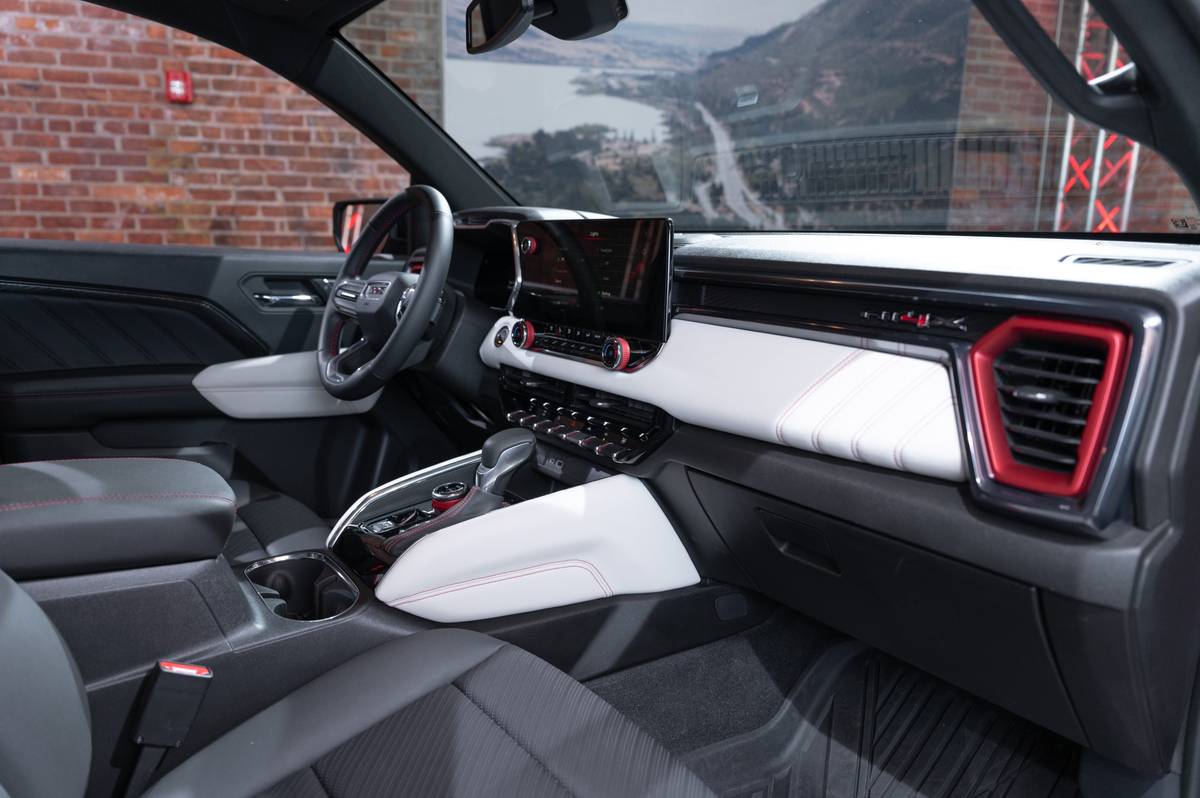
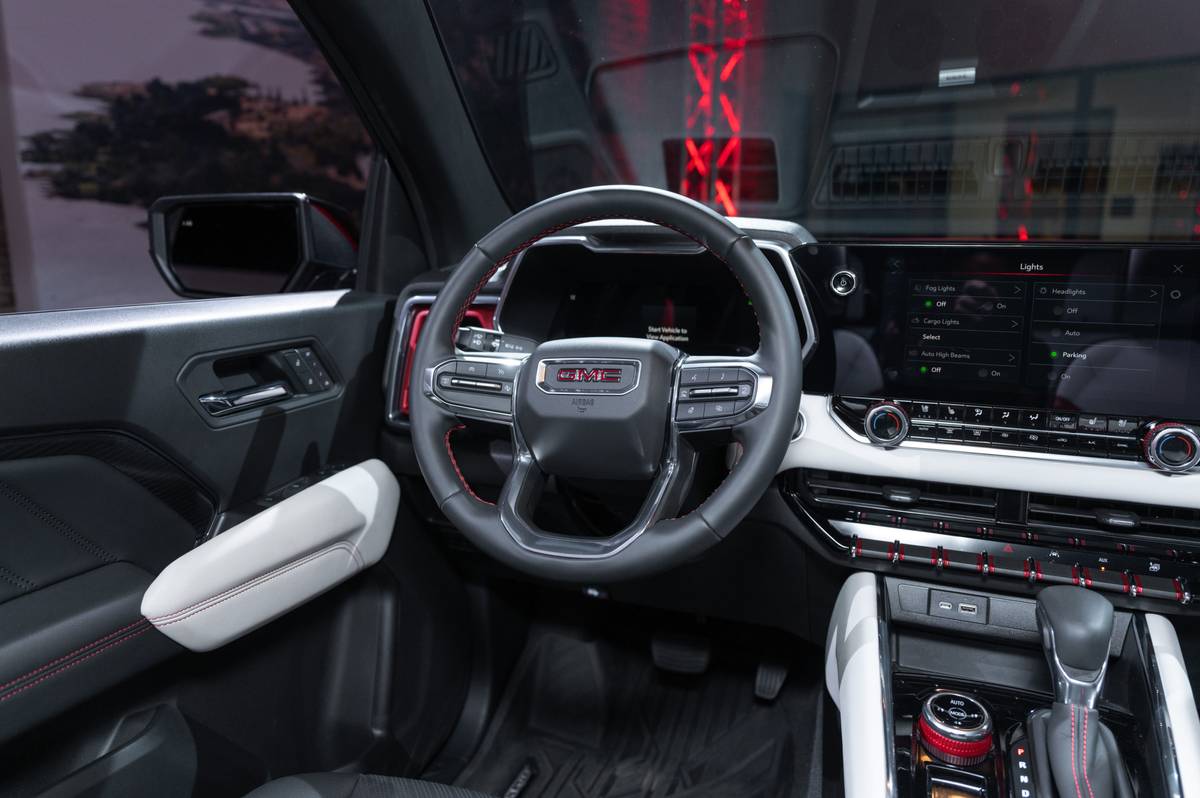
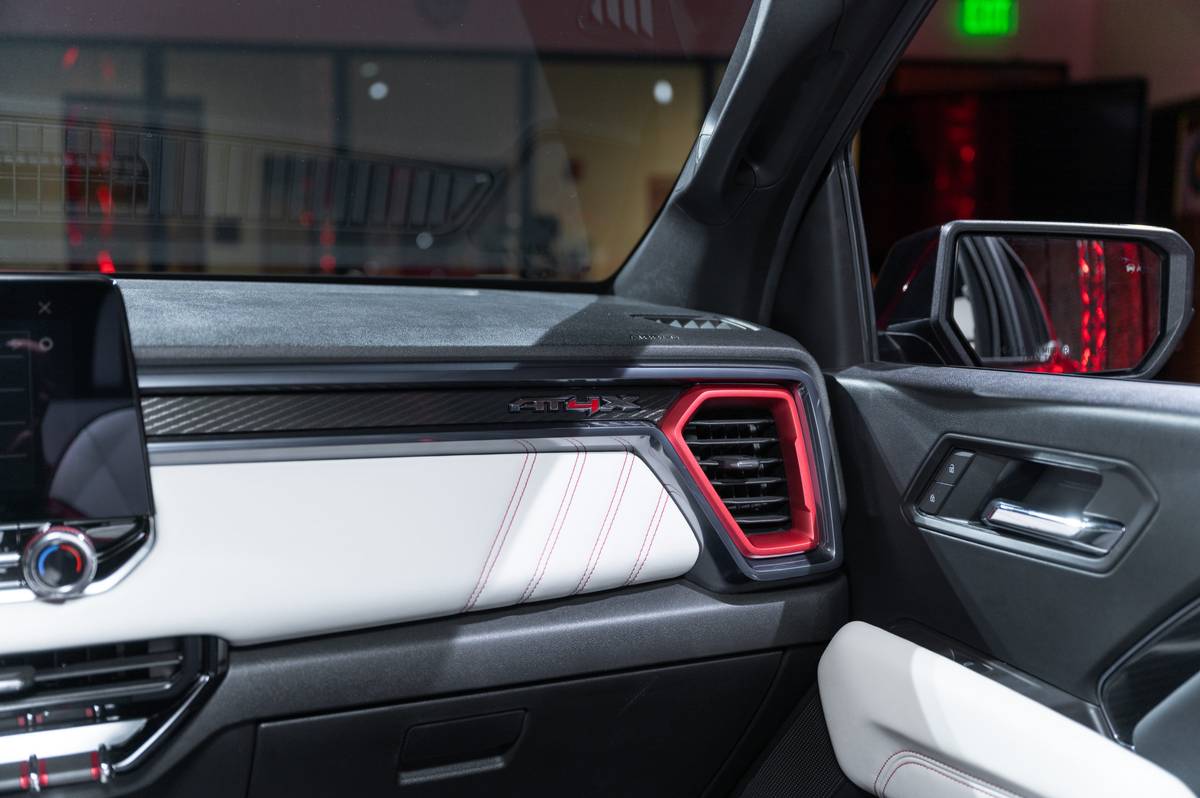
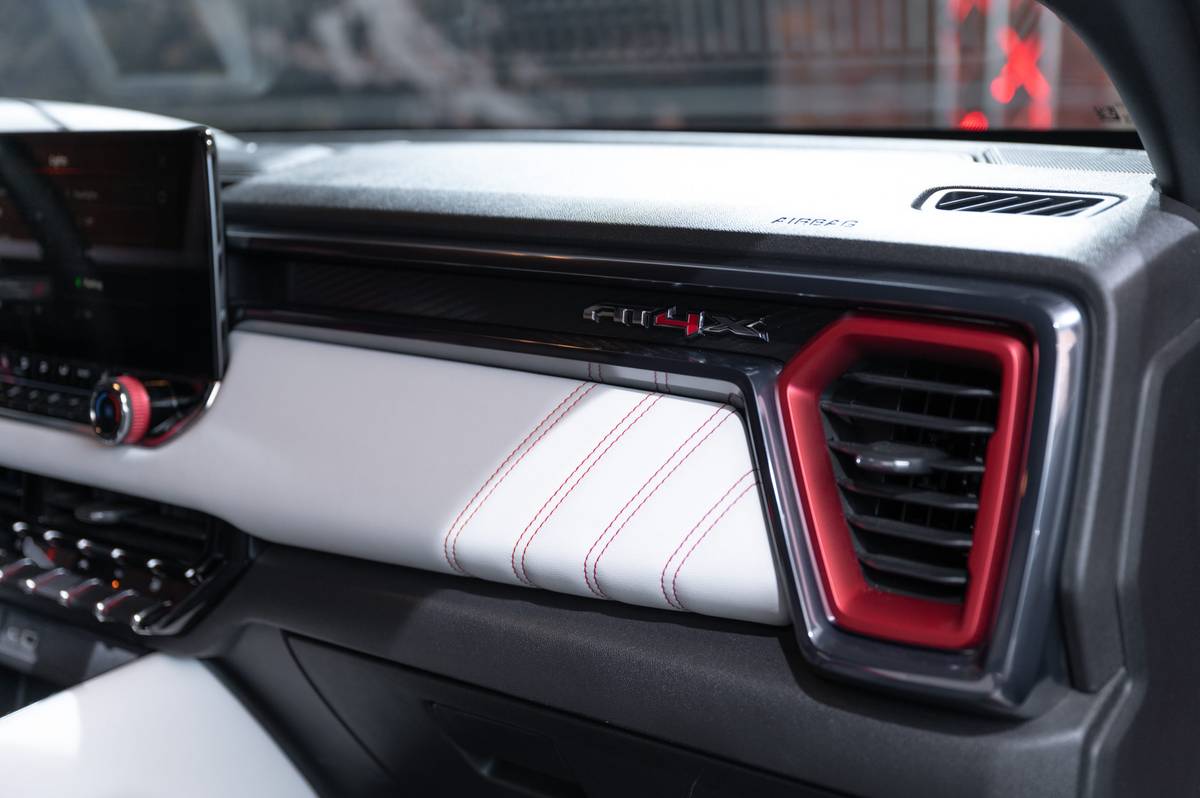
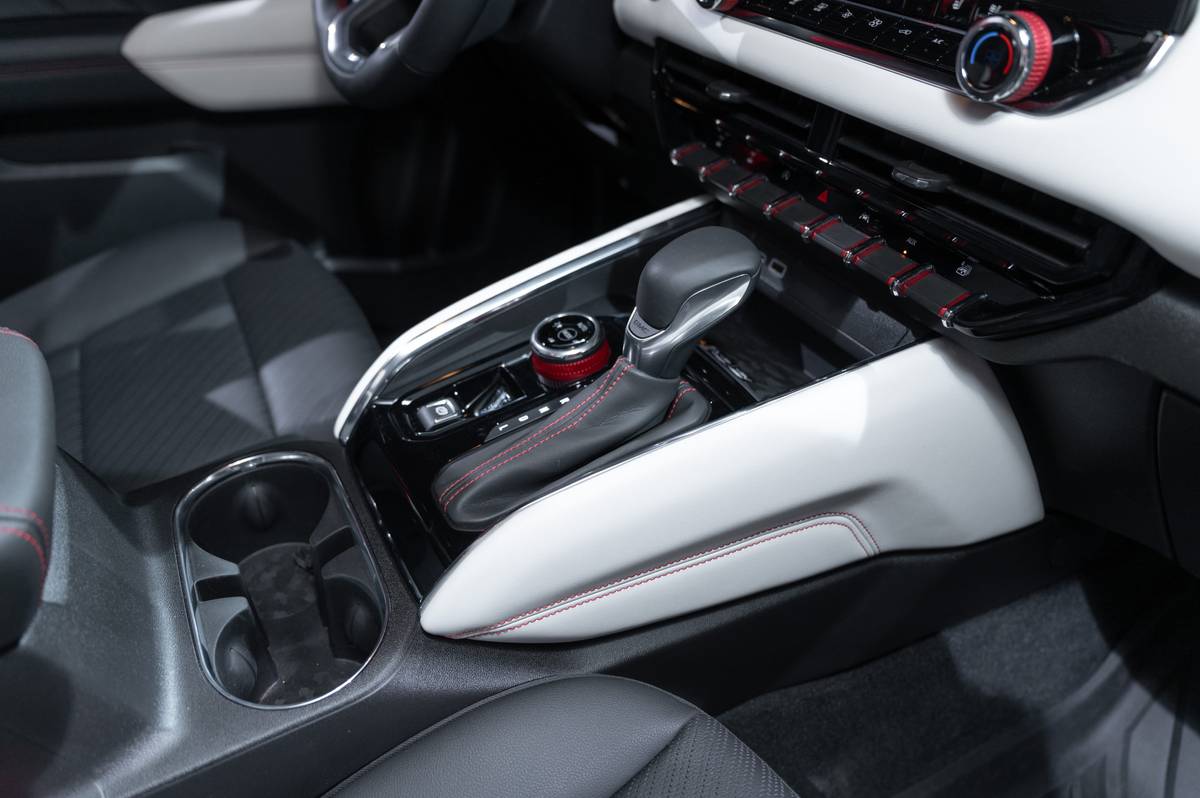


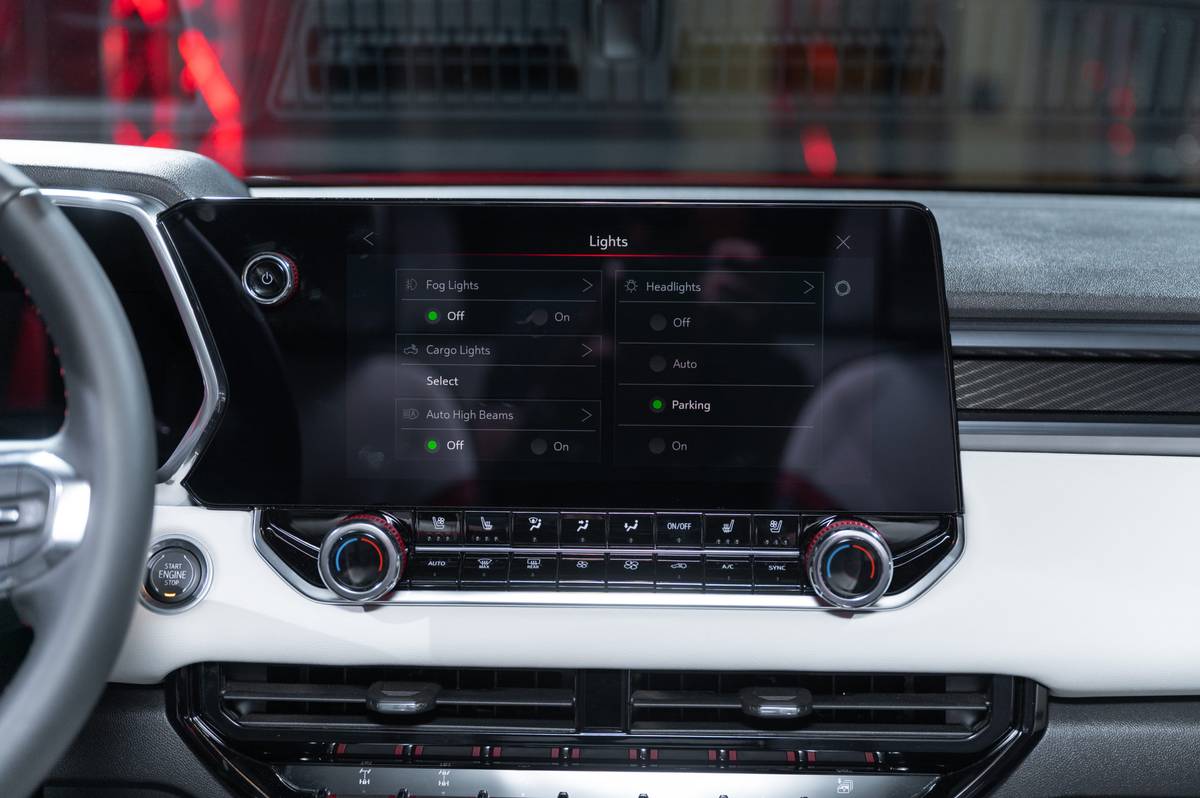
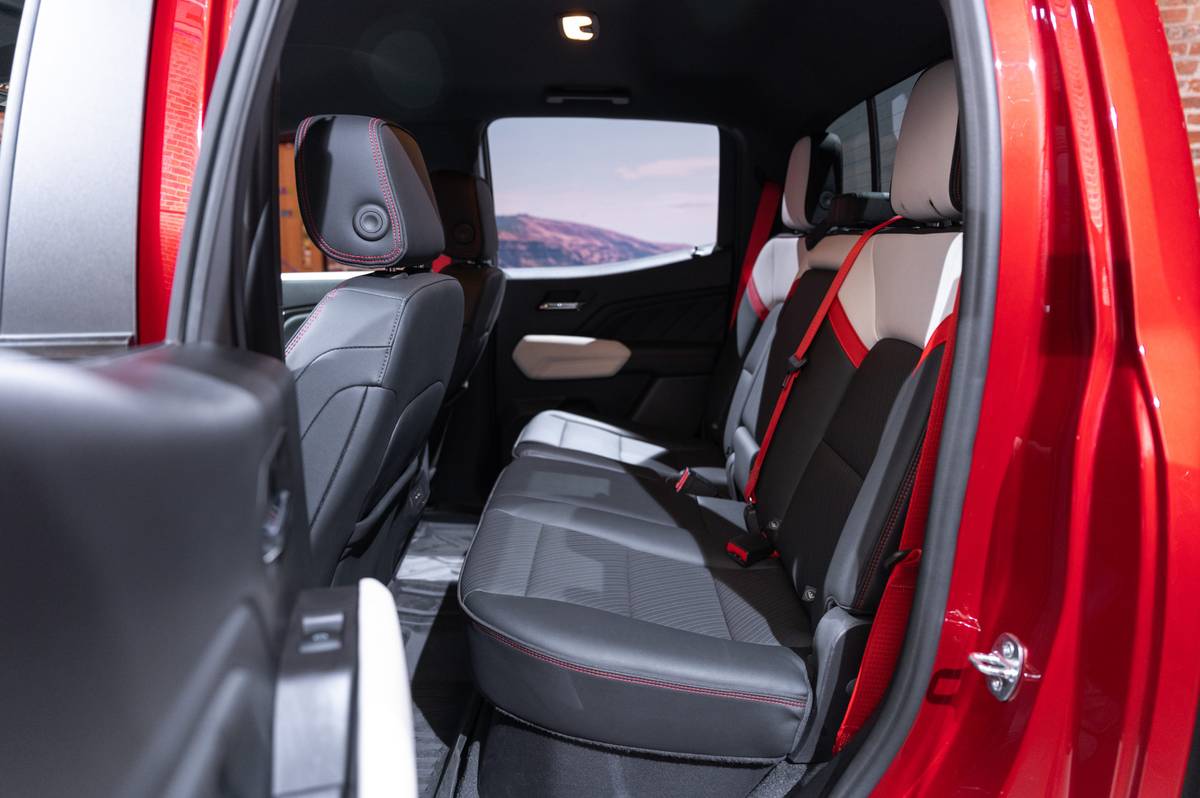
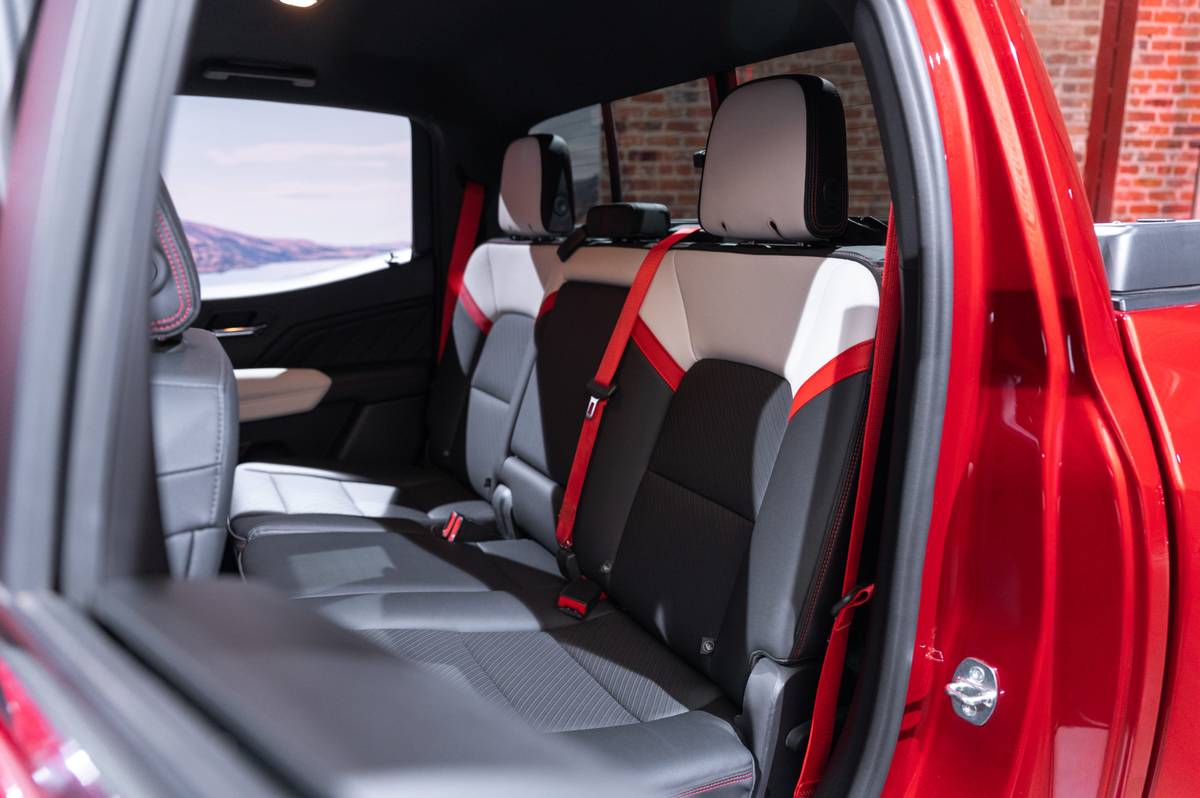

































The first thing you notice about the new Canyon is that it looks nothing like the old one. Its stance — wider and longer than before, with chunky styling and multifaceted body panels — makes it look more like an off-road-ready Toyota Tacoma than anything GMC has put out previously. And that fits with what GMC has decided to do with the Canyon: Since 40% of the current generation are leaving showrooms as AT4 off-road models, and since mid-size truck buyers seem to enjoy the Tonka-truck look of being able to scale boulders even if they don’t actually do that, GMC decided to just go in whole-hog and make the entire 2023 lineup off-road-ready. Even the Denali, previously an on-road, luxury-oriented trim level meant to be more fancy than foresty, has been lifted 2 inches and given 32-inch all-terrain tires and a high front bumper with the corners cut off.
Best-in-Class Interior?
The part that really shines for the new Canyon is inside, where GMC has not only created what feels like a best-in-class interior for fit, finish and materials quality, but for design, as well. It looks different from the prior generation thanks to far better materials (the leather alone is a vast improvement, and the wood trim is actually wood in the Denali), and it also looks sufficiently different from the Colorado — enough to justify what is surely going to be a price premium.
There’s only one aspect of the new Canyon’s interior that falls flat on its face: GMC eliminated the headlight switch and instead made it a screen on the multimedia system, like a Tesla. There’s absolutely zero logical reason to do this other than cost savings; it makes it impossible to turn the lights on without having the screen on, which becomes a pain in the butt if you don’t have a key in your pocket or just want to light up a garage, parking lot or campsite. It’s the lone, massive blemish on an otherwise beautifully executed, truly impressive interior. This cabin is going to set the bar for the segment, and the bar is high, indeed.
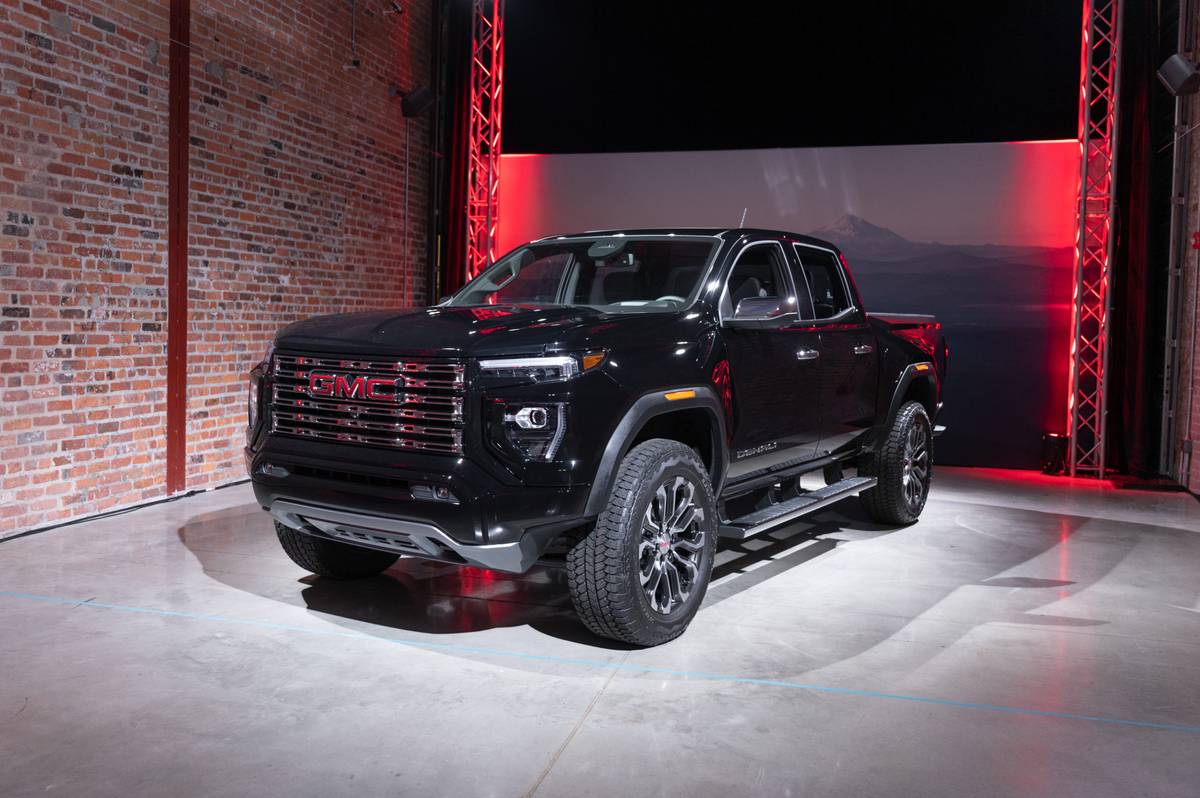
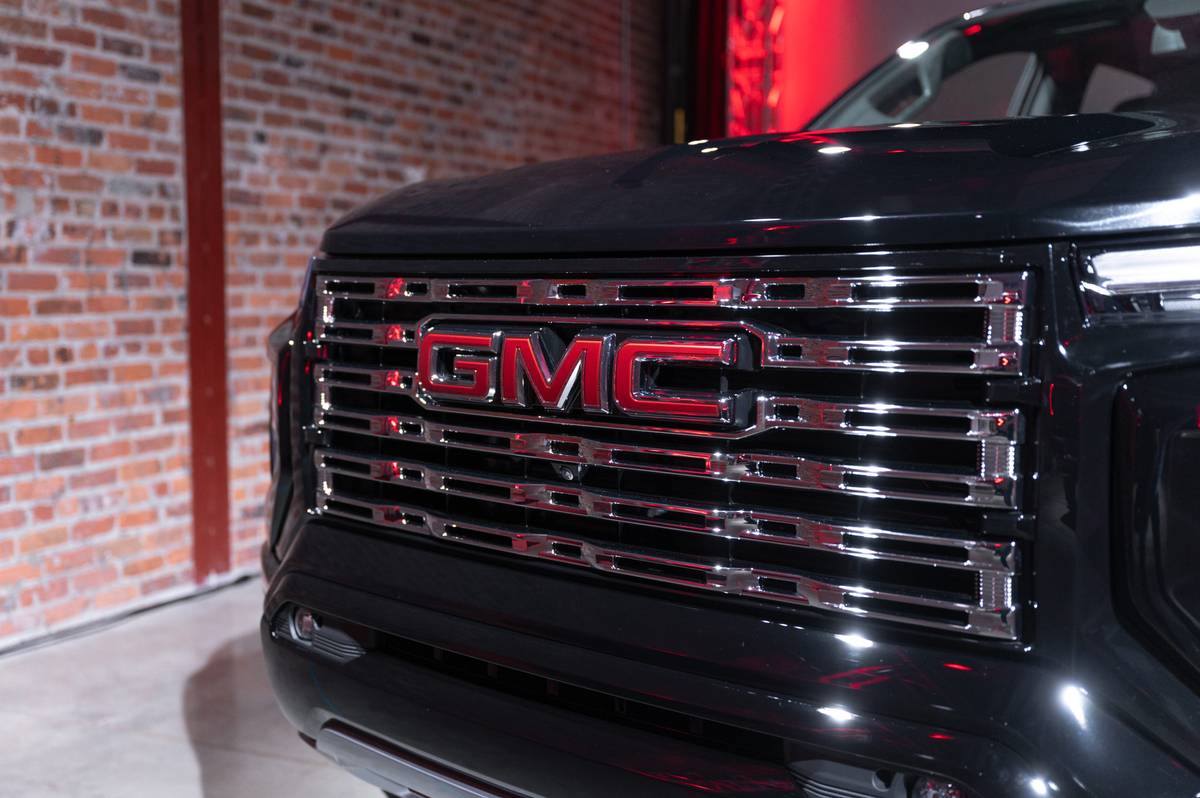
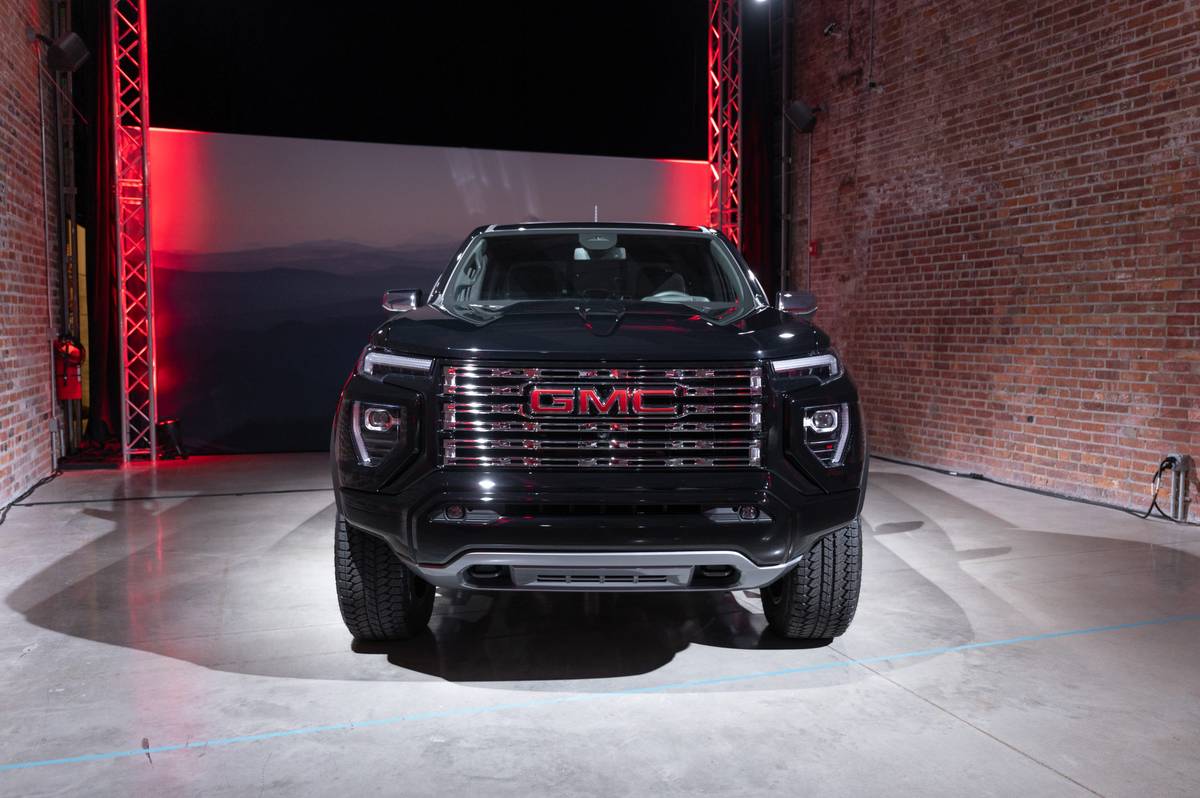
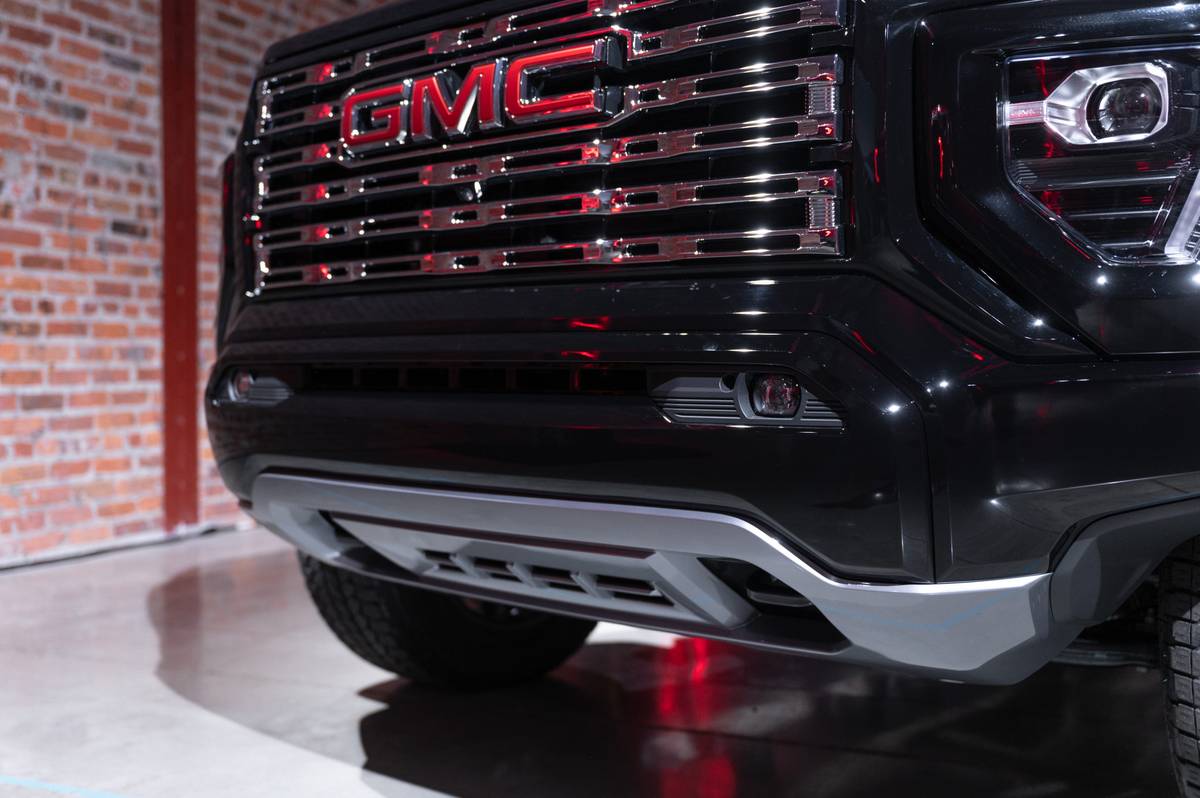
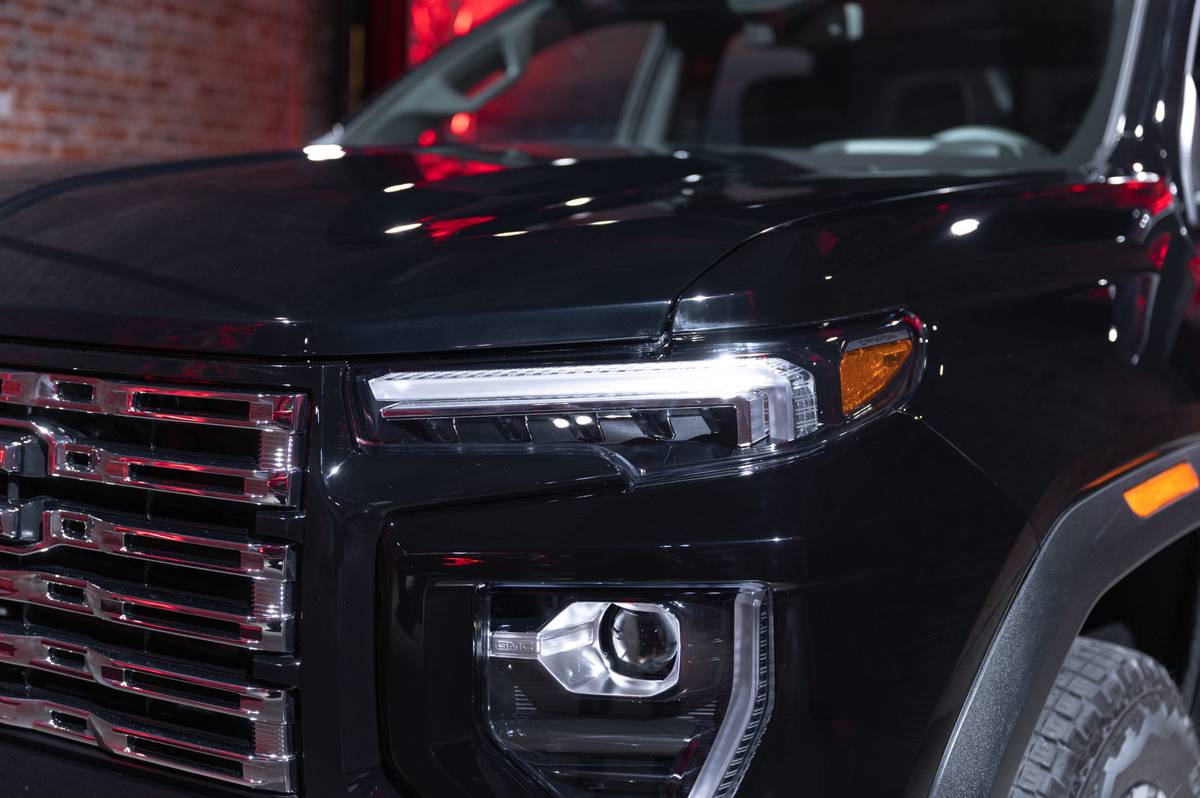
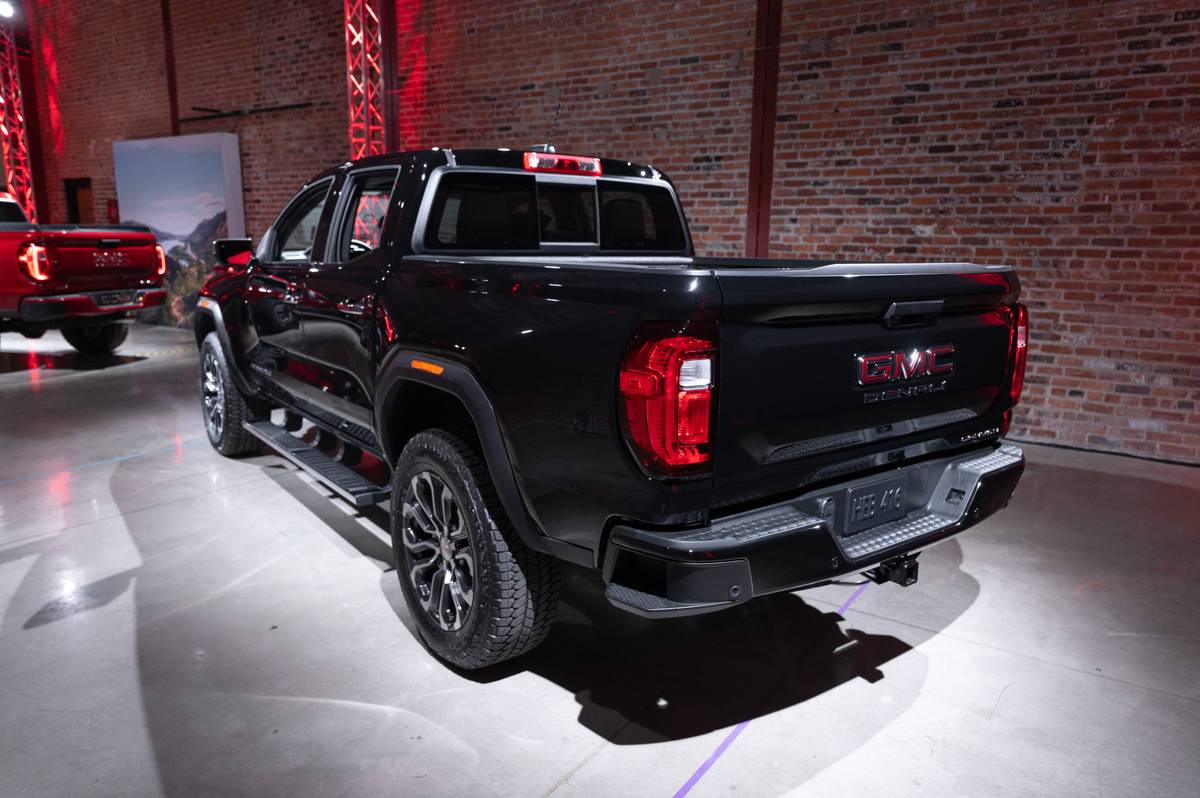
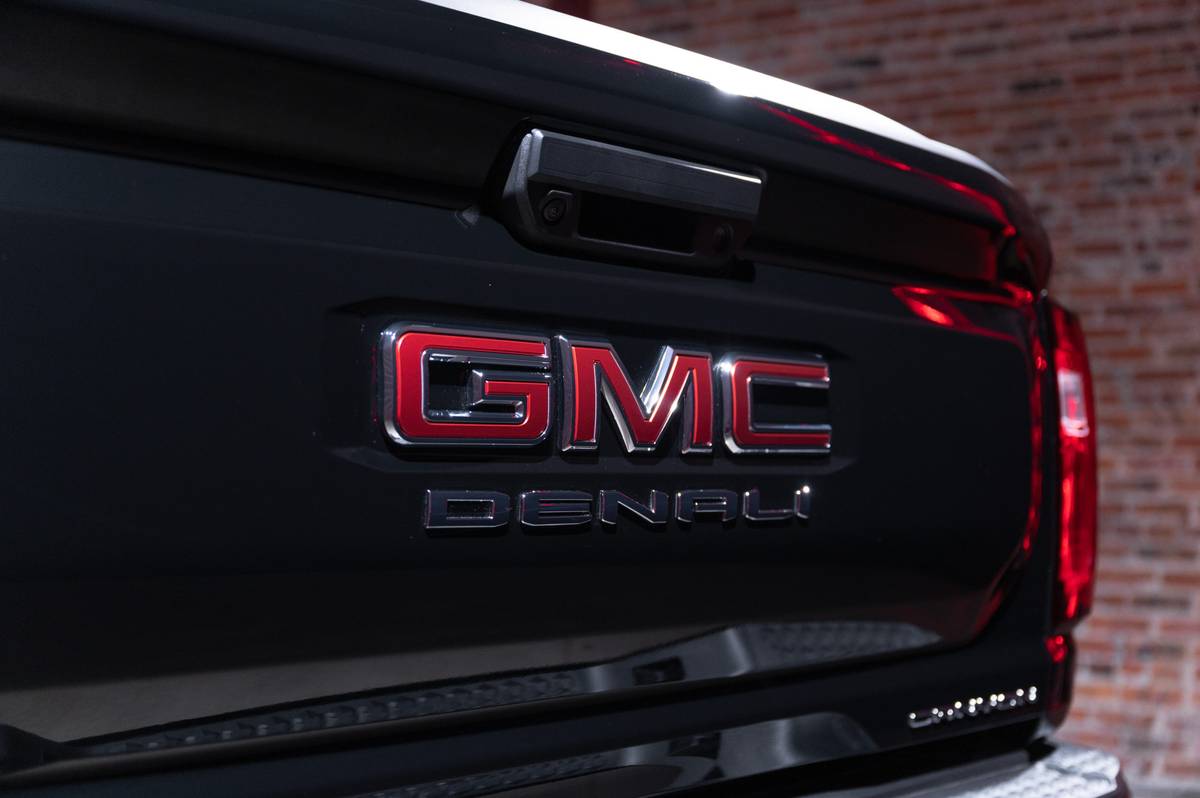
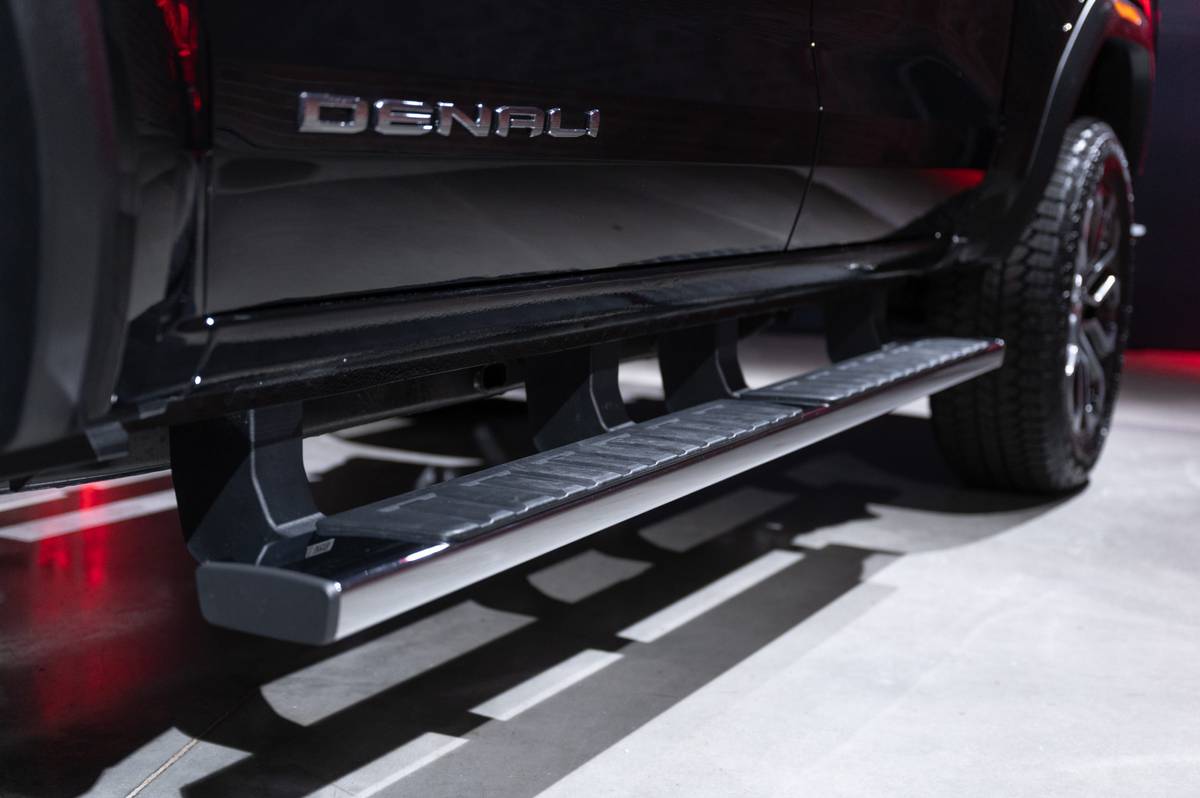
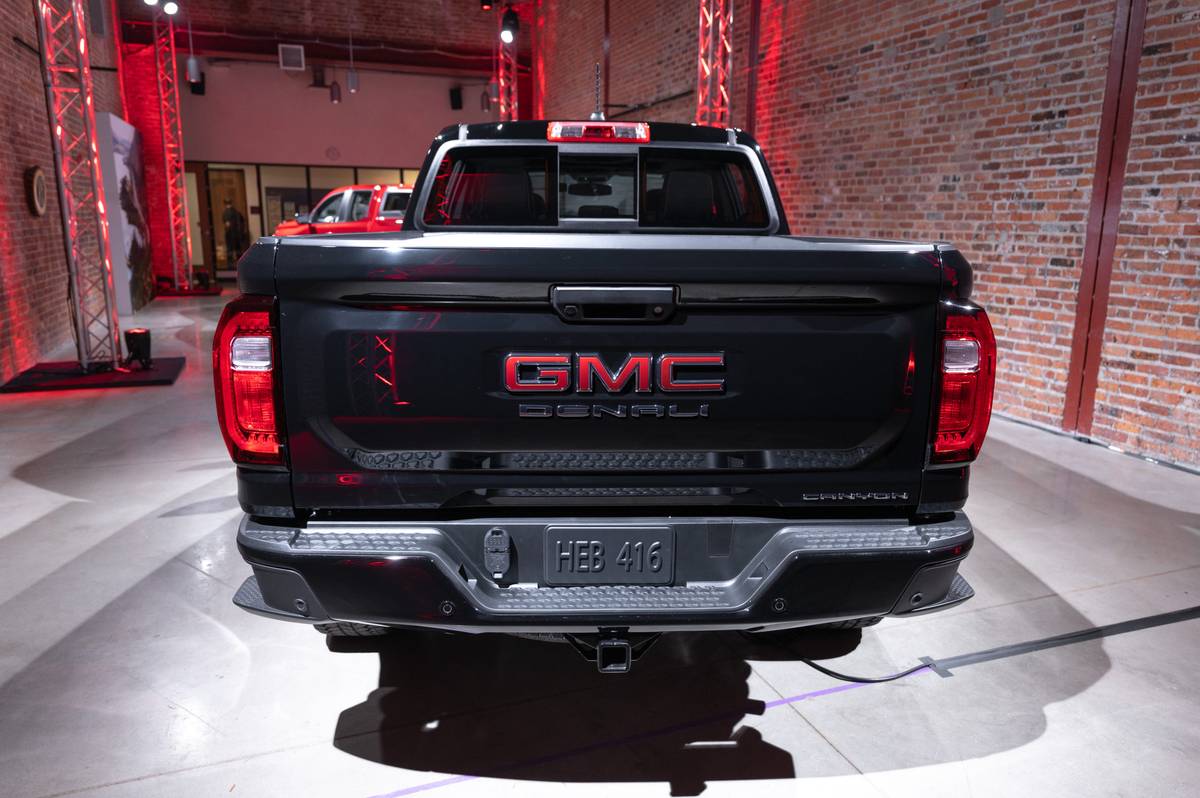
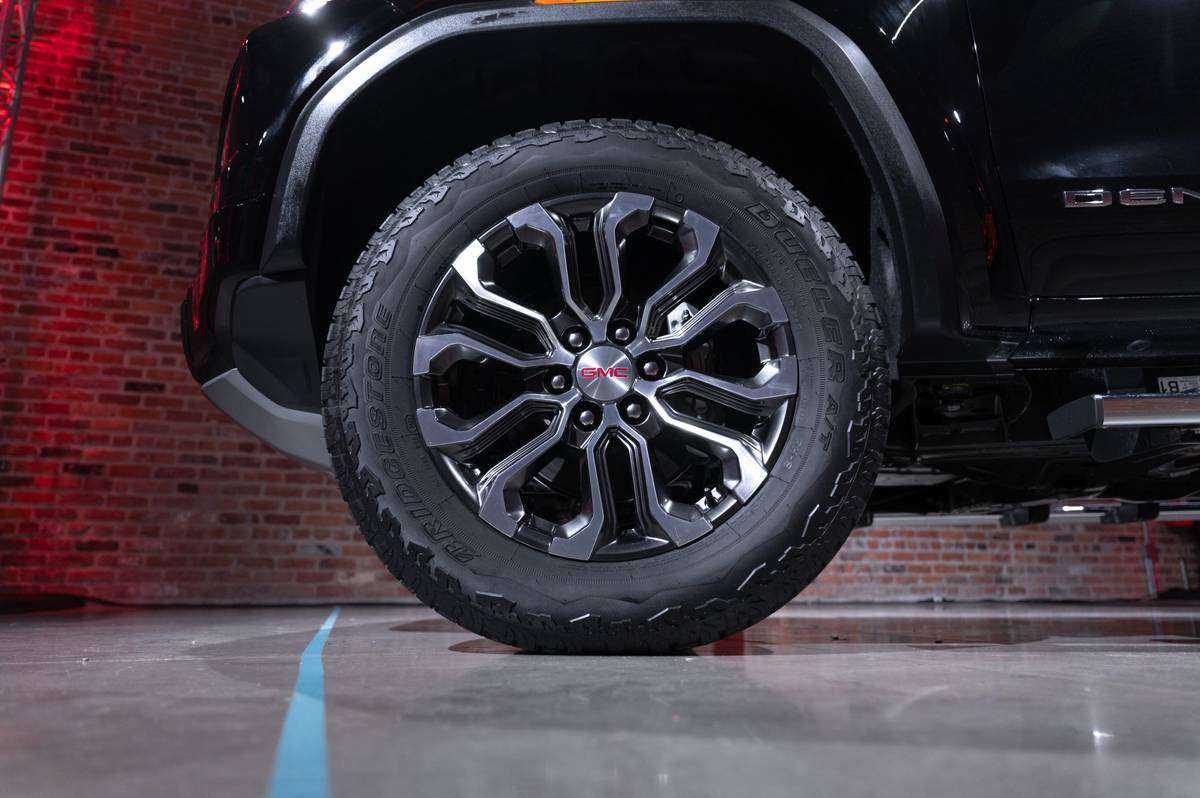
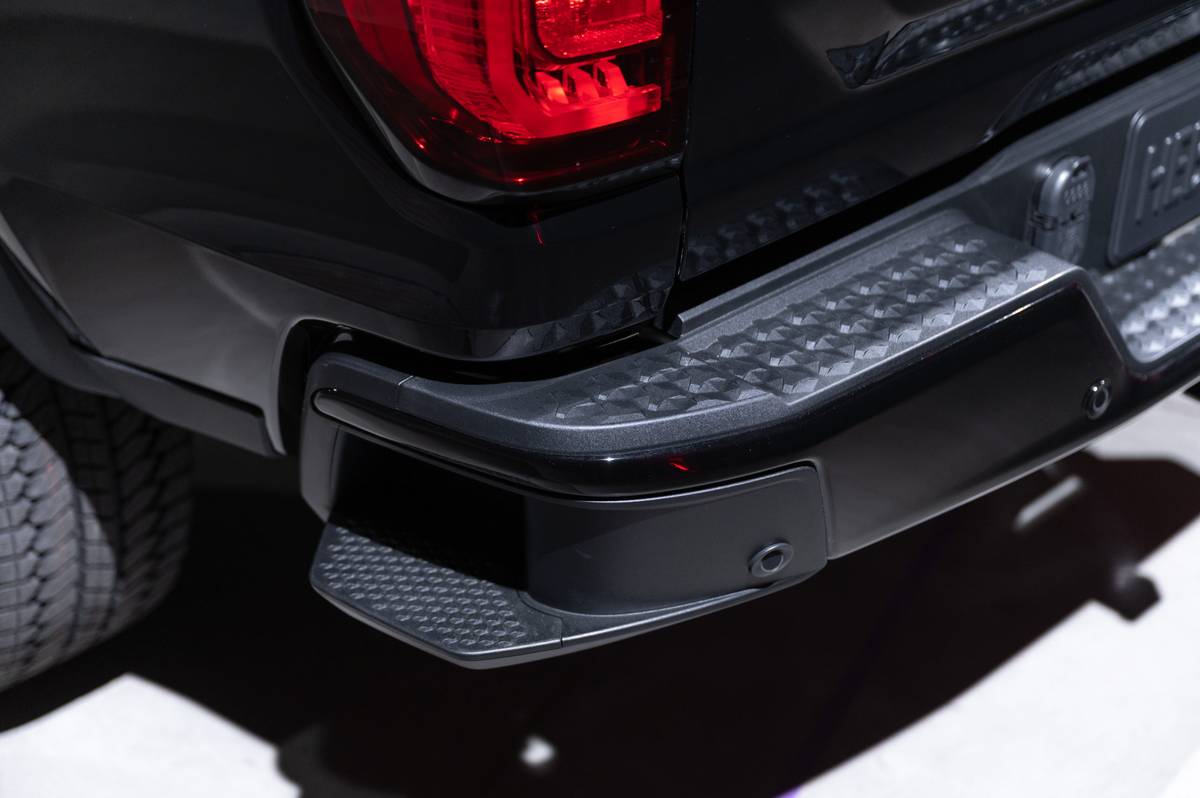
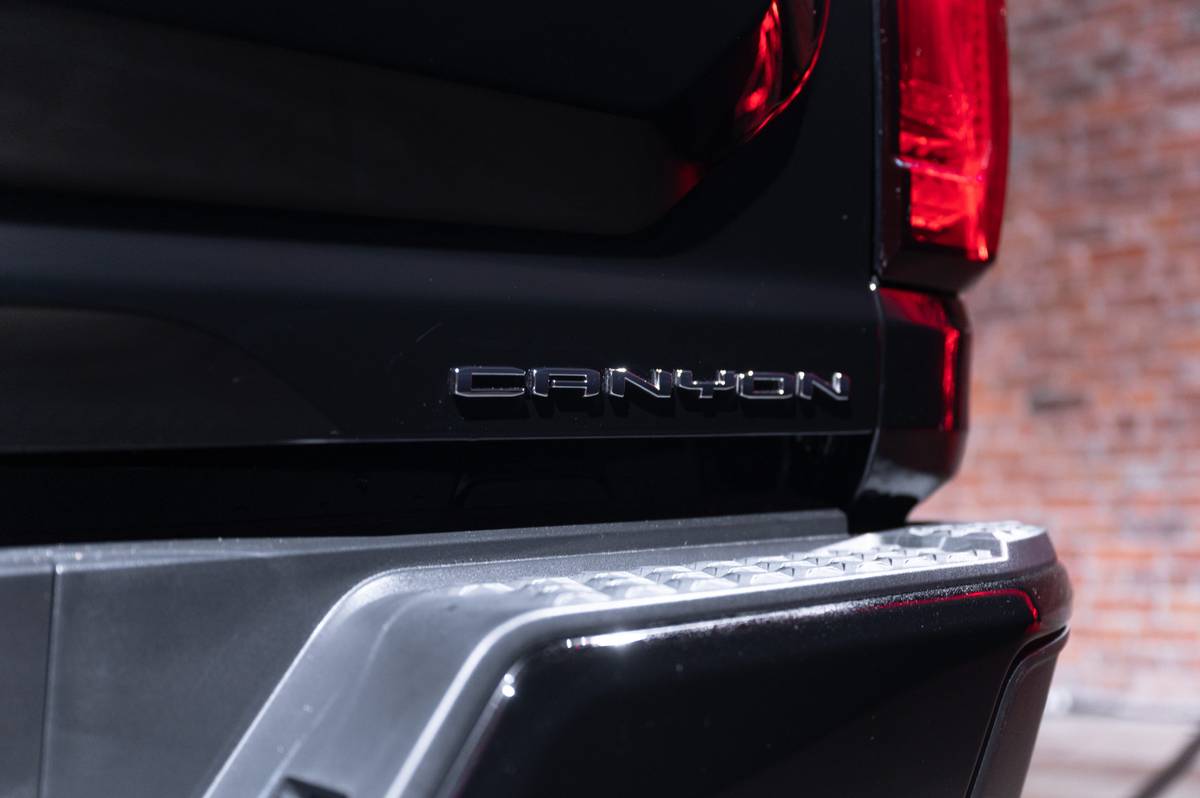
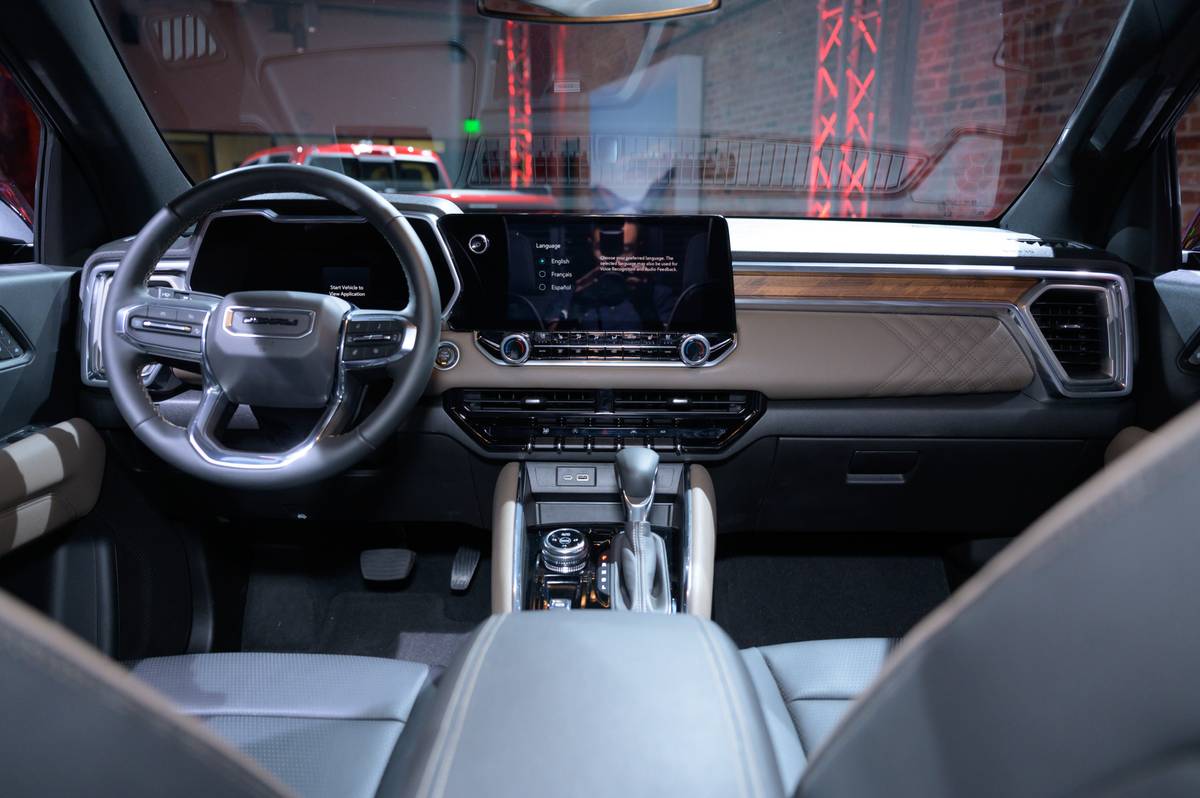
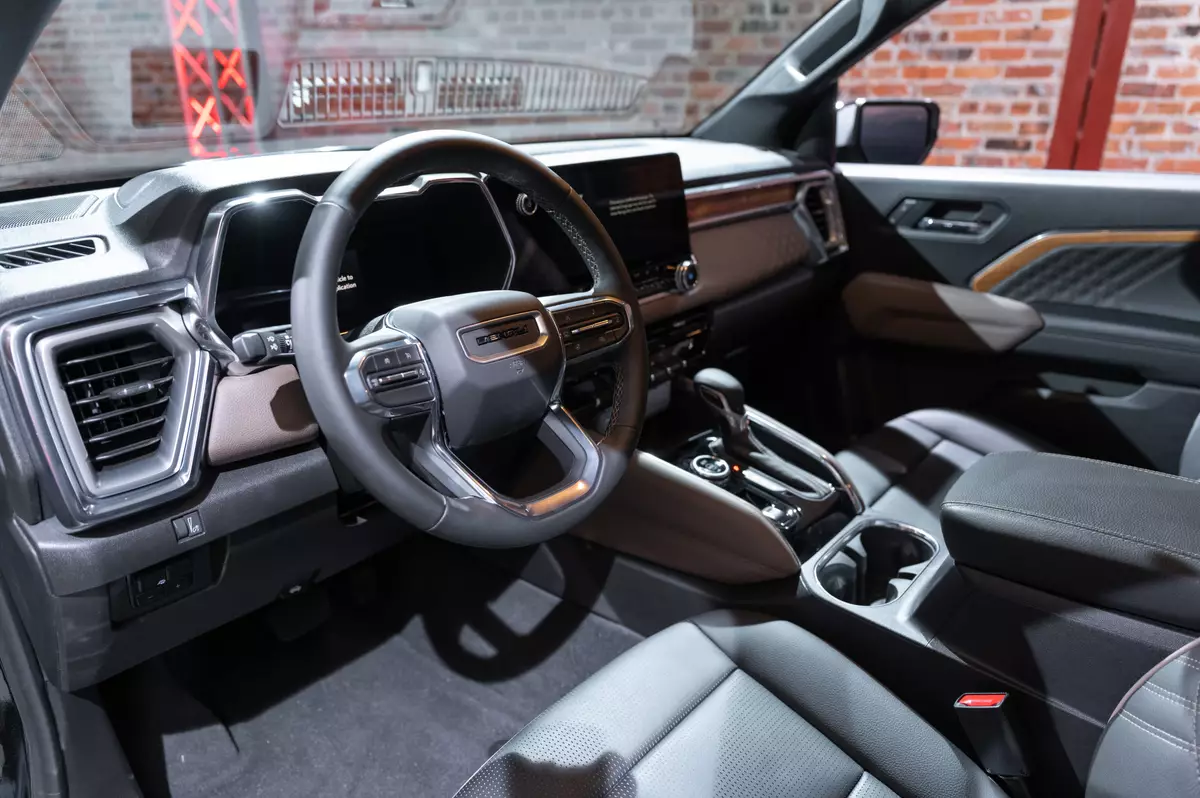
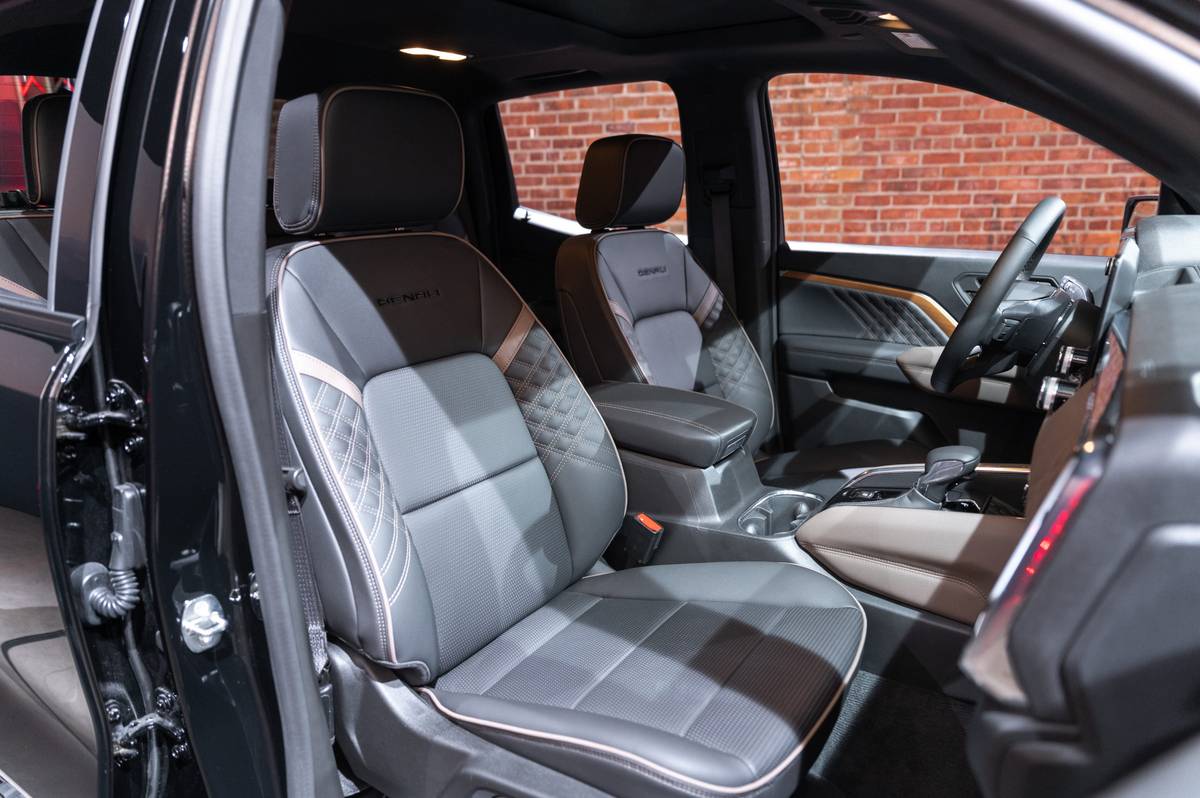

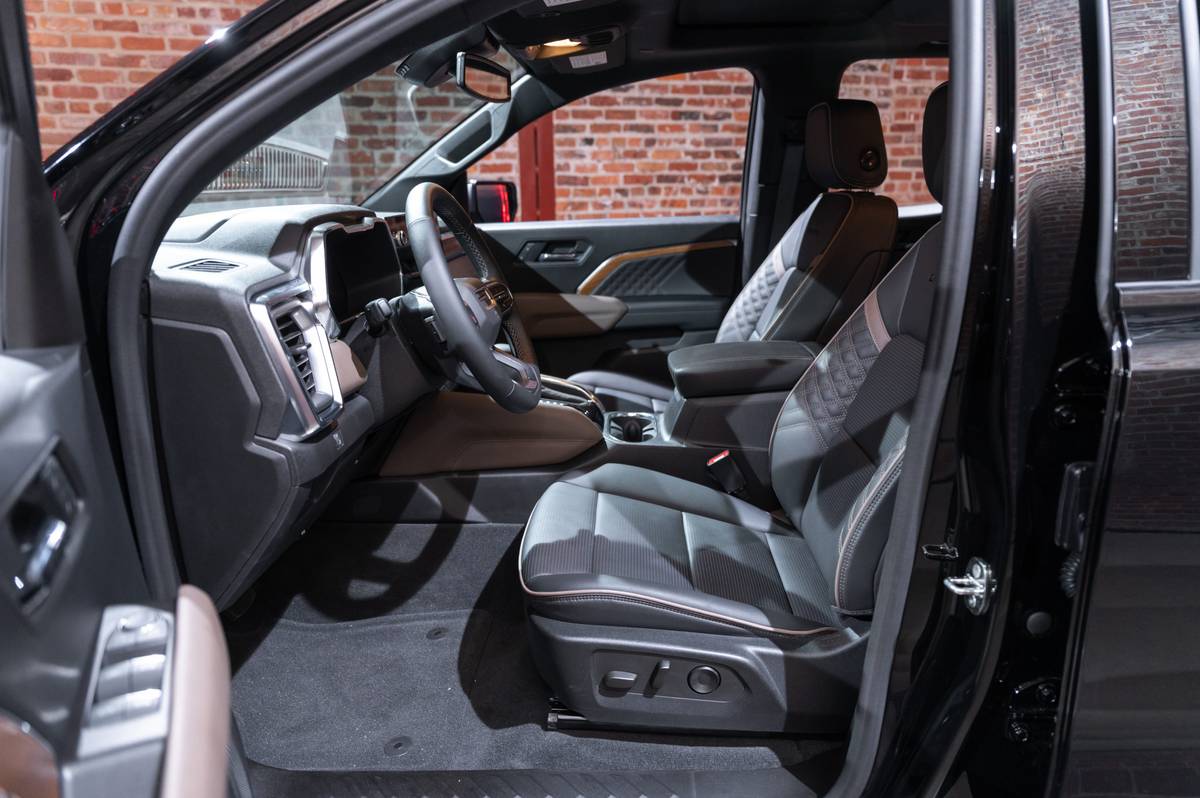
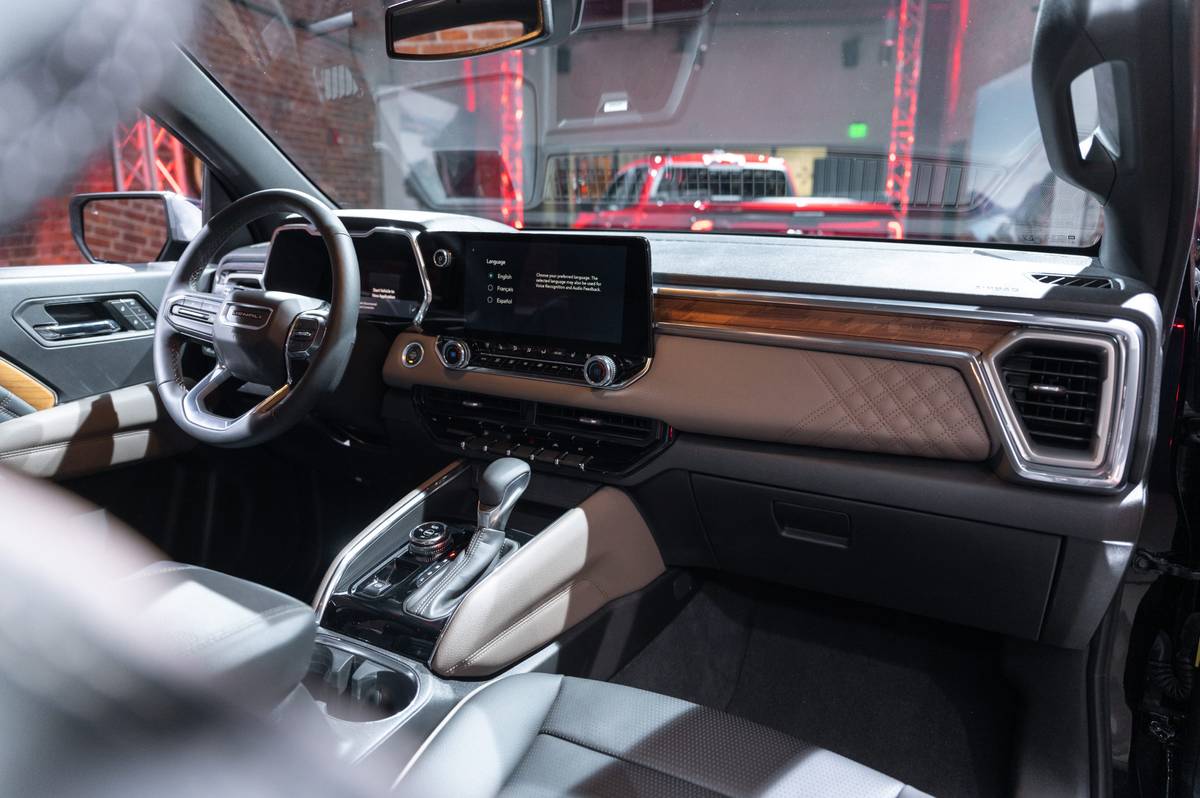
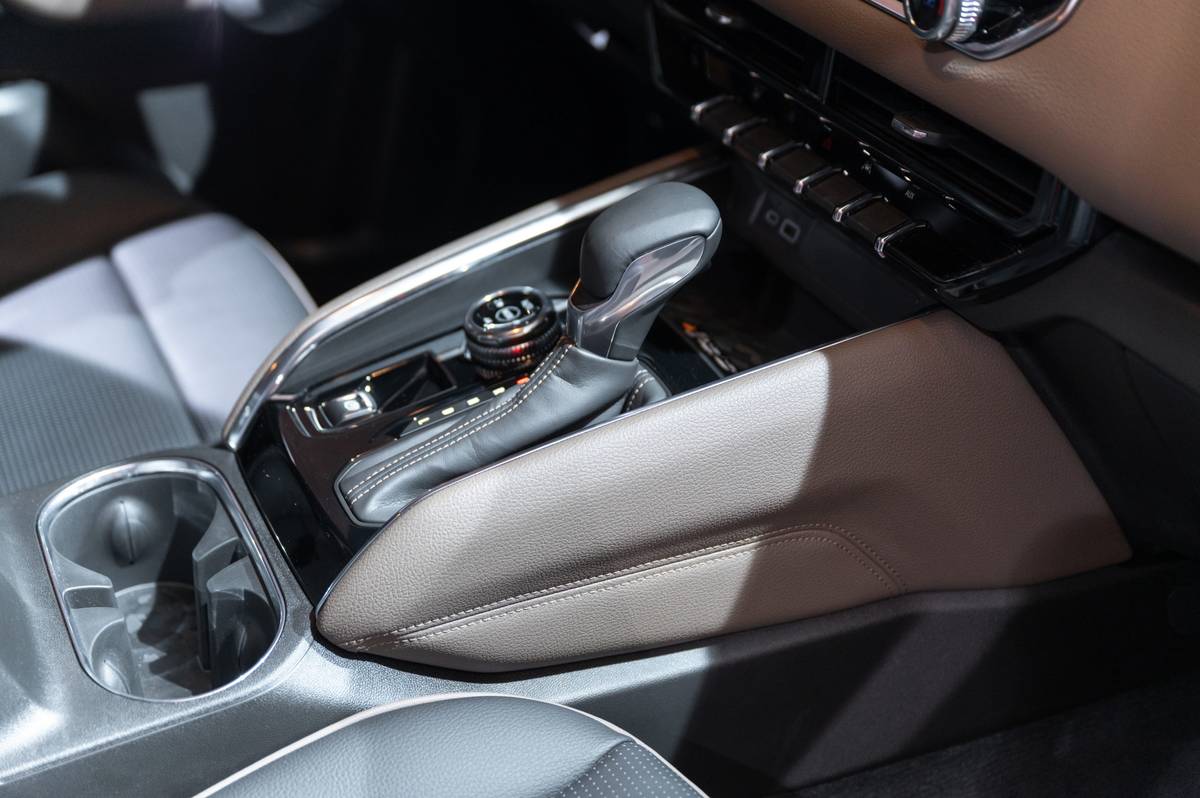
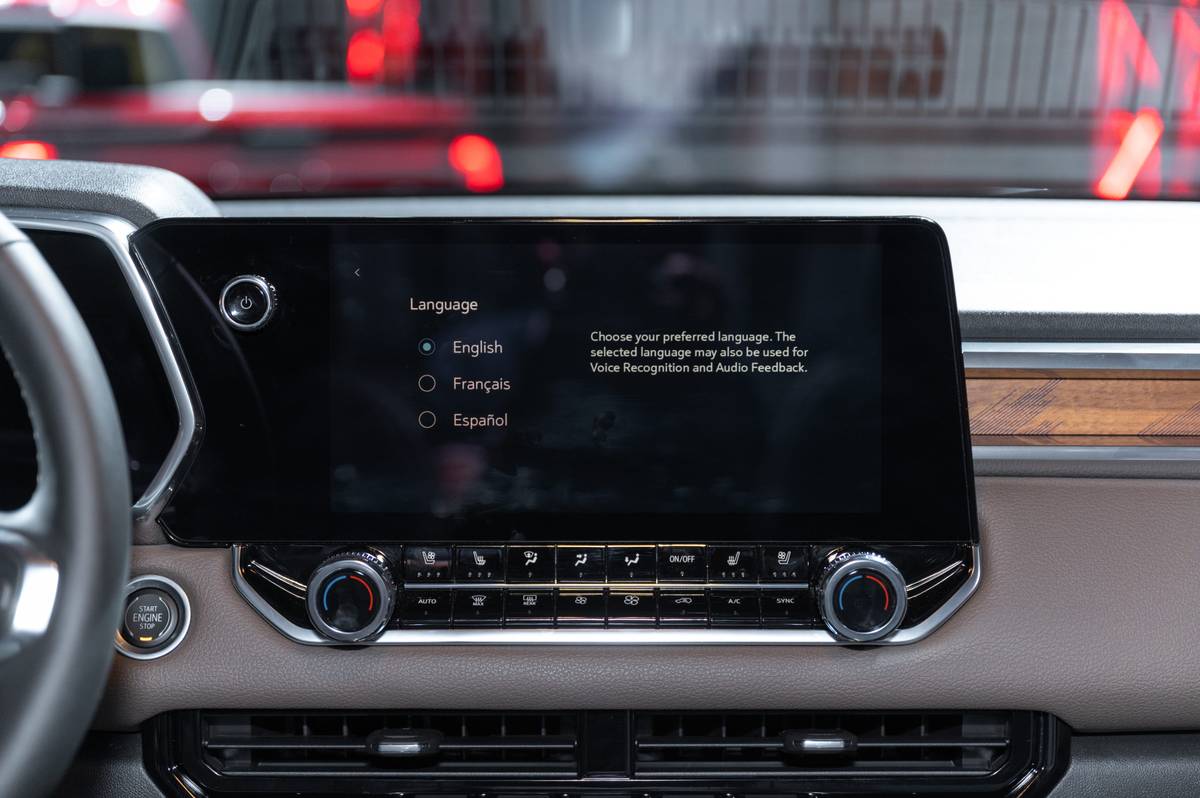
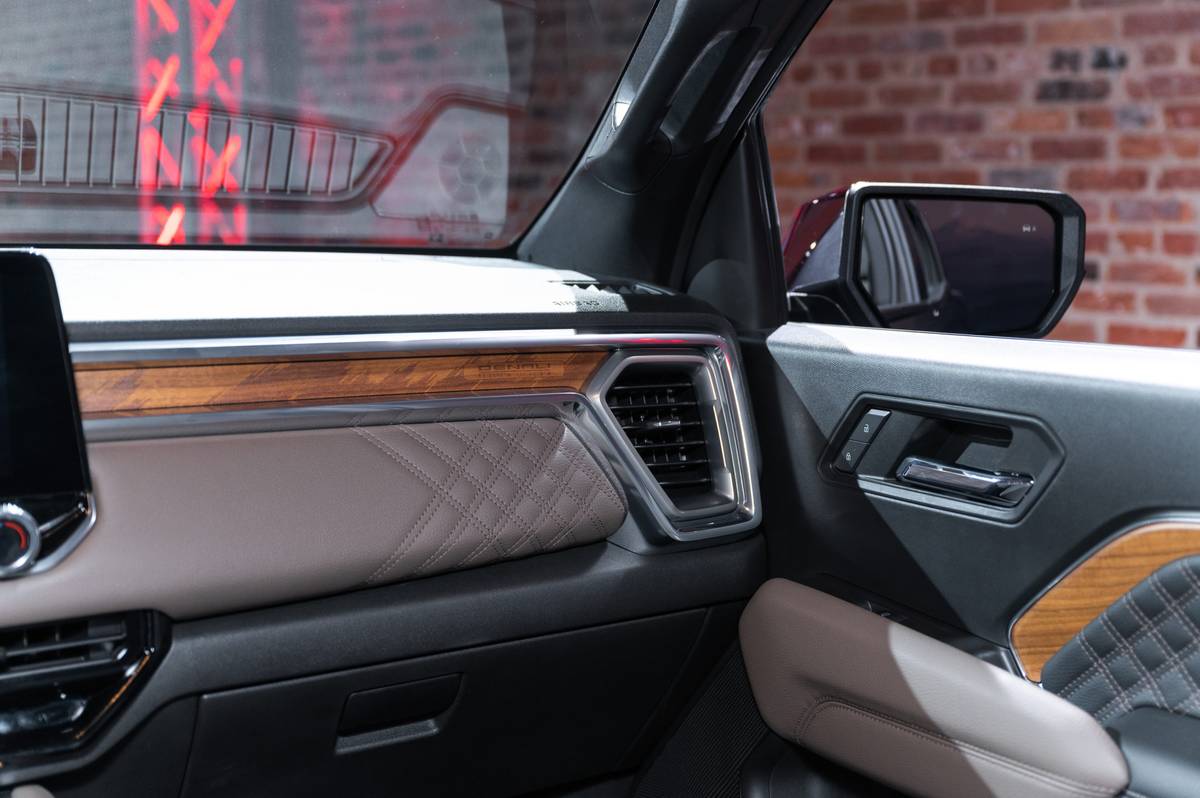
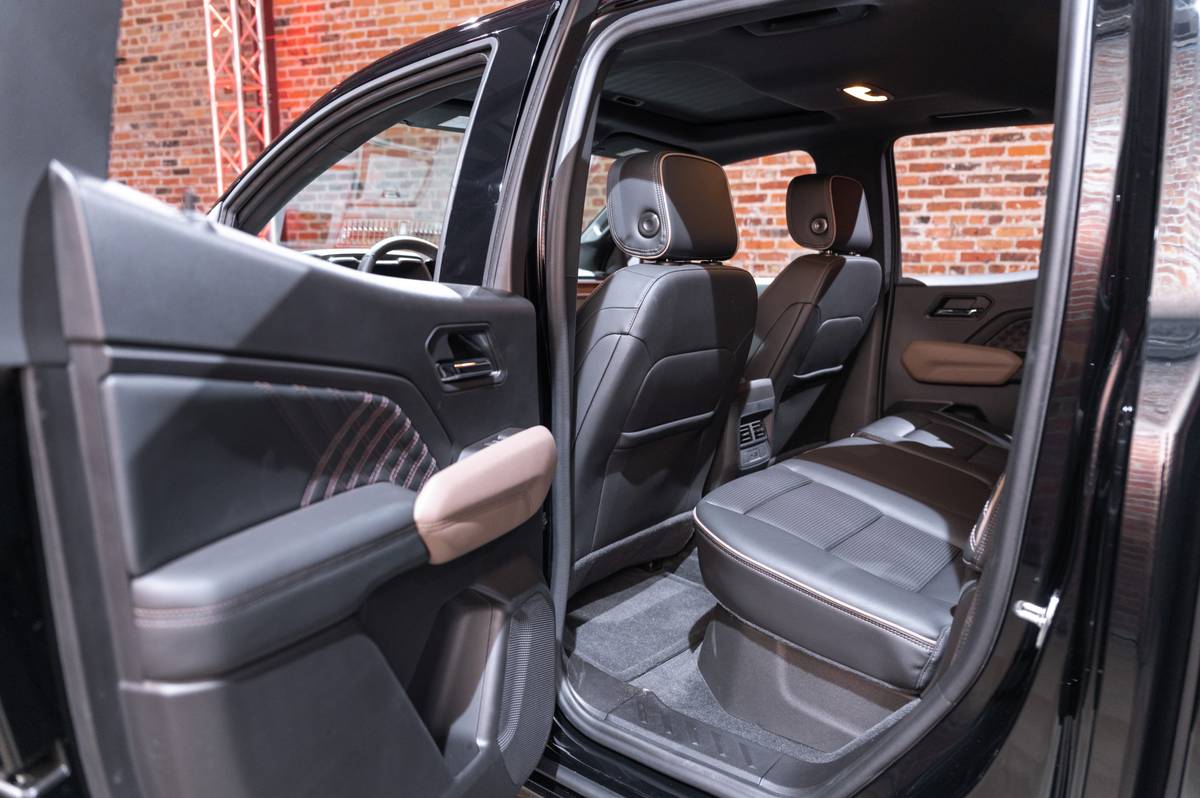
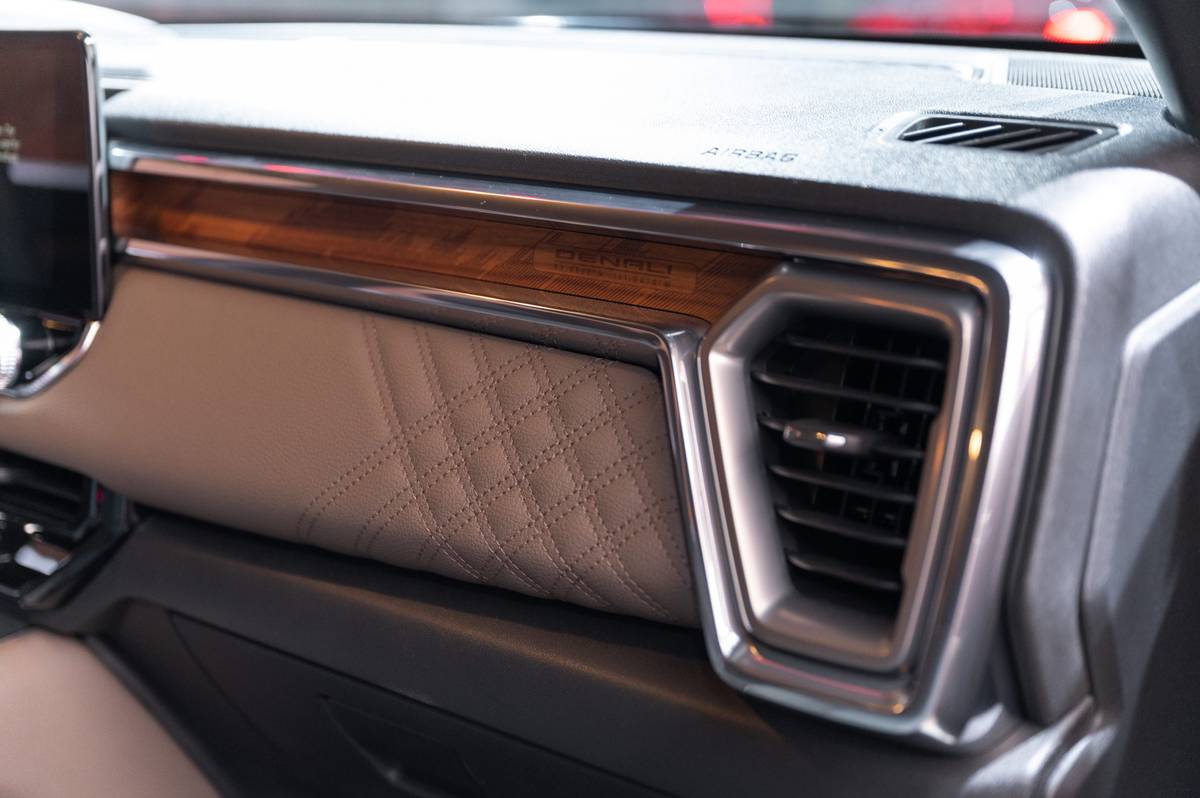
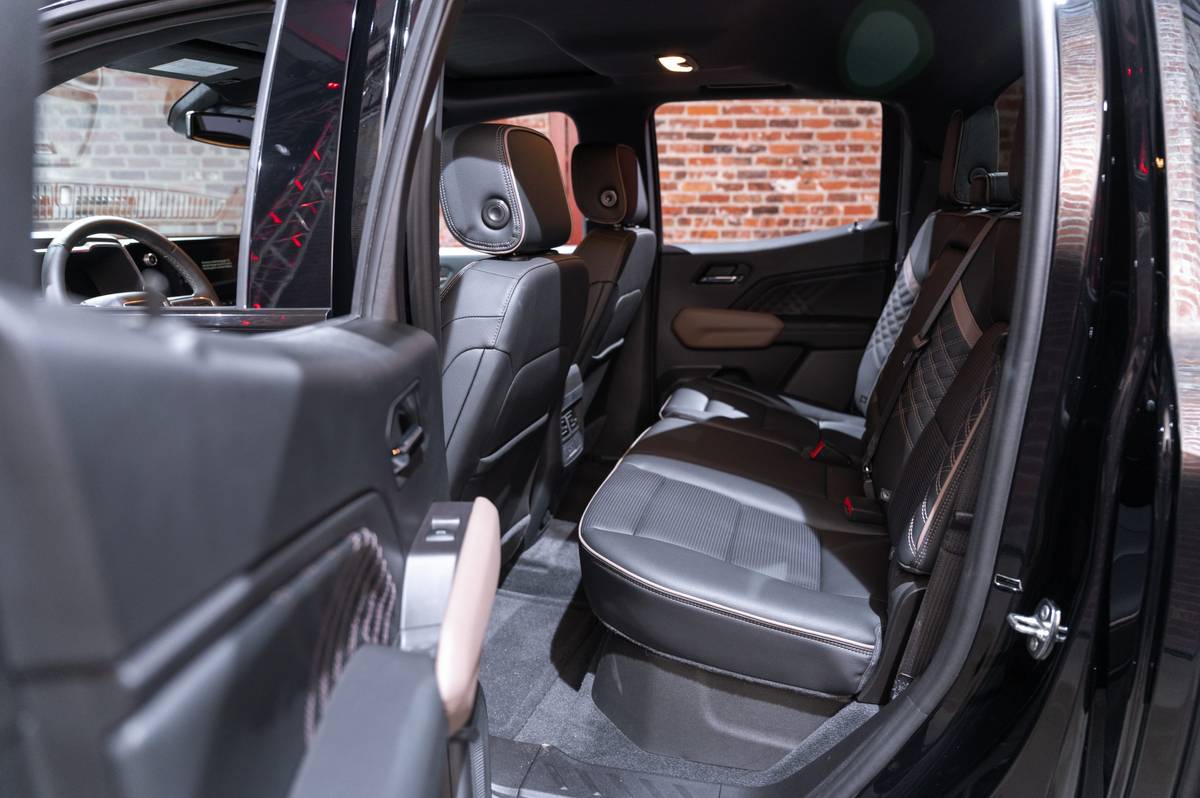
























The Rocketship
While all the off-road goodies and luxury-trimmed stuff is fine and interesting, the Canyon I’m most curious about is the as-yet-unseen base Elevation trim level. It will be the only Canyon offered in rear-wheel-drive, with four-wheel-drive as an option. But unlike the Chevy Colorado’s base models and lesser trims, the Elevation will feature the same powertrain as the rest of the Canyon lineup: the top engine from the Colorado, the most powerful version of GM’s turbocharged 2.7-liter four-cylinder engine pumping out 310 horsepower and 430 pounds-feet of torque. That’s V-8 power in a two-wheel-drive mid-size pickup, and that’s likely to be a freakin’ rocketship. That powertrain combination is not available in the Colorado, providing another point of differentiation between the Chevy and the GMC. While GMC says the Elevation is likely to sticker at around $40,000 to start (more than we expect a lower-trim Colorado to go for), it’s going to be very interesting to see what kind of standard equipment you can get for that kind of scratch.
The new Canyon represents a bit of a mindset shift for GMC — the whole “Professional Grade” mantra that the brand has lived by for a while isn’t being applied quite as carefully to the new Canyon. GMC says that yes, the Canyon will still be totally civilized and good to drive on the street, but the whole “all trucks need to be off-road-ready” idea has caught on at GM bigtime, and it appears that every Canyon will be following that trend.
More From Cars.com:
- 2023 Chevrolet Colorado Comes in 3 Off-Road Flavors
- 2022 Chevrolet Silverado 1500 ZR2: Towing With an Off-Roader
- GM Begins First Phase of Retrofit Installation With Heated, Ventilated Seats
- Are American-Made Cars Easier to Find in the Inventory Shortage?
- Up Close With the 2024 Chevrolet Blazer EV: Hitting the Sweet Spot for Sporty EVs
Related Video:
Cars.com’s Editorial department is your source for automotive news and reviews. In line with Cars.com’s long-standing ethics policy, editors and reviewers don’t accept gifts or free trips from automakers. The Editorial department is independent of Cars.com’s advertising, sales and sponsored content departments.

Detroit Bureau Chief Aaron Bragman has had over 25 years of experience in the auto industry as a journalist, analyst, purchasing agent and program manager. Bragman grew up around his father’s classic Triumph sports cars (which were all sold and gone when he turned 16, much to his frustration) and comes from a Detroit family where cars put food on tables as much as smiles on faces. Today, he’s a member of the Automotive Press Association and the Midwest Automotive Media Association. His pronouns are he/him, but his adjectives are fat/sassy.
Featured stories





































